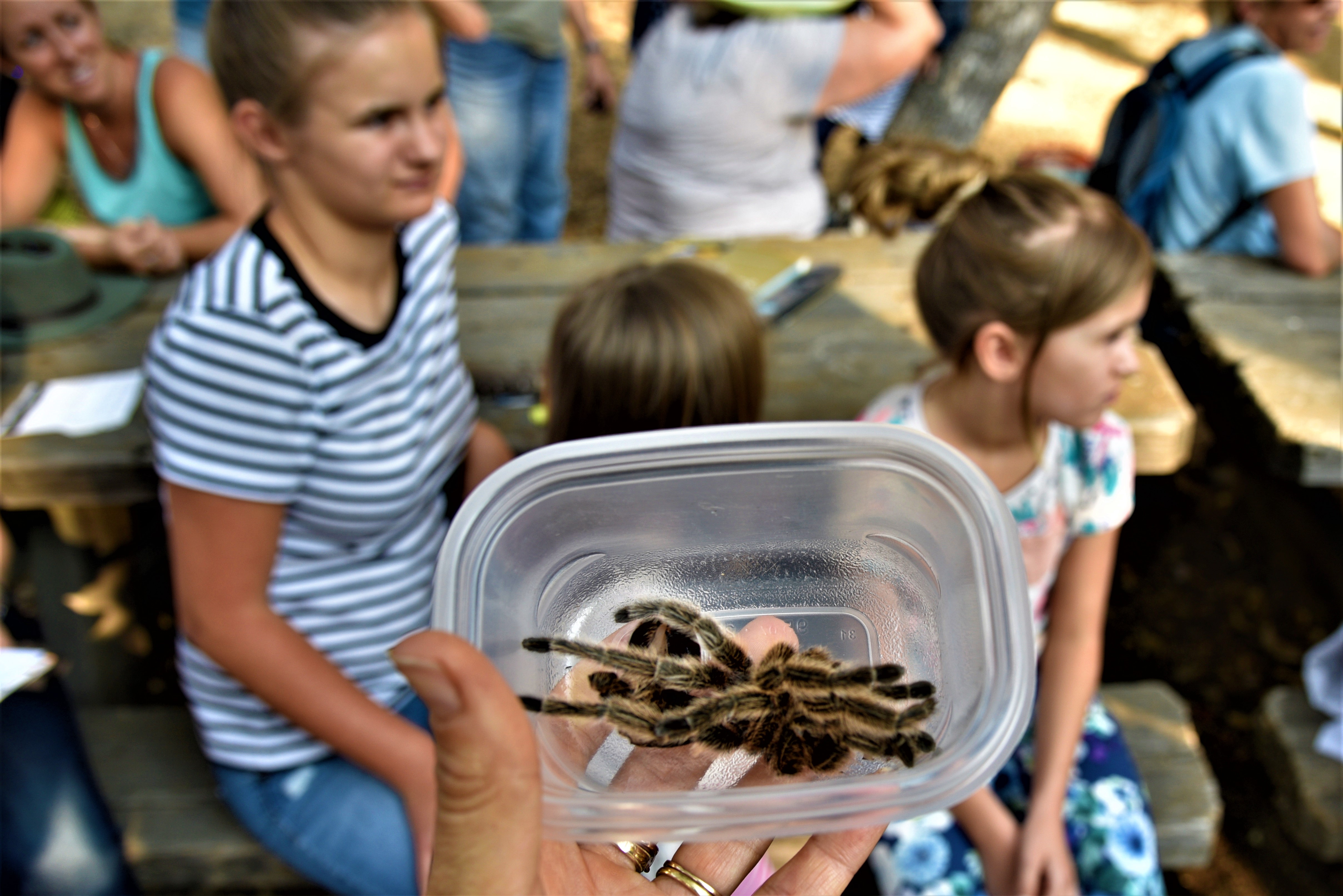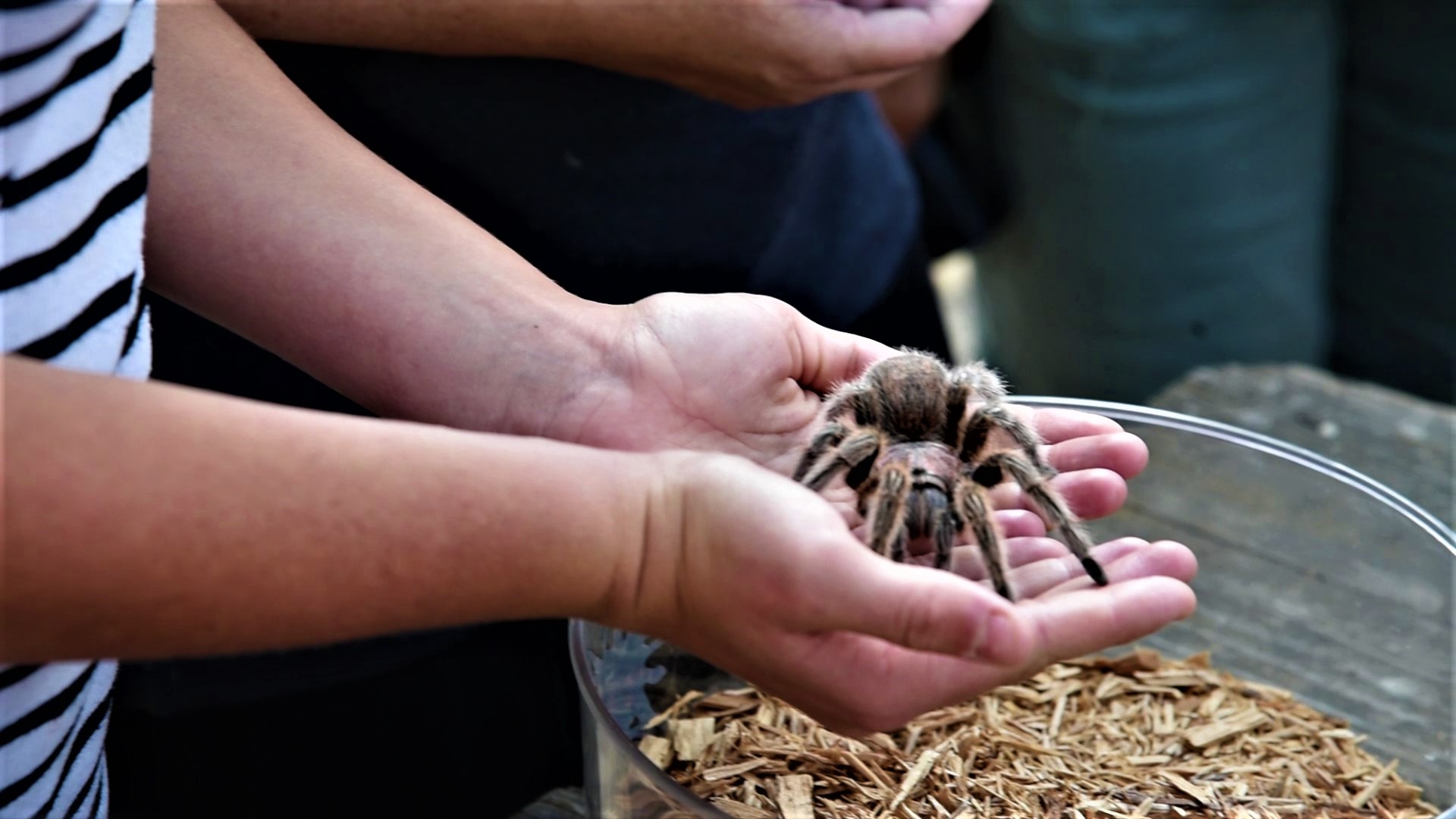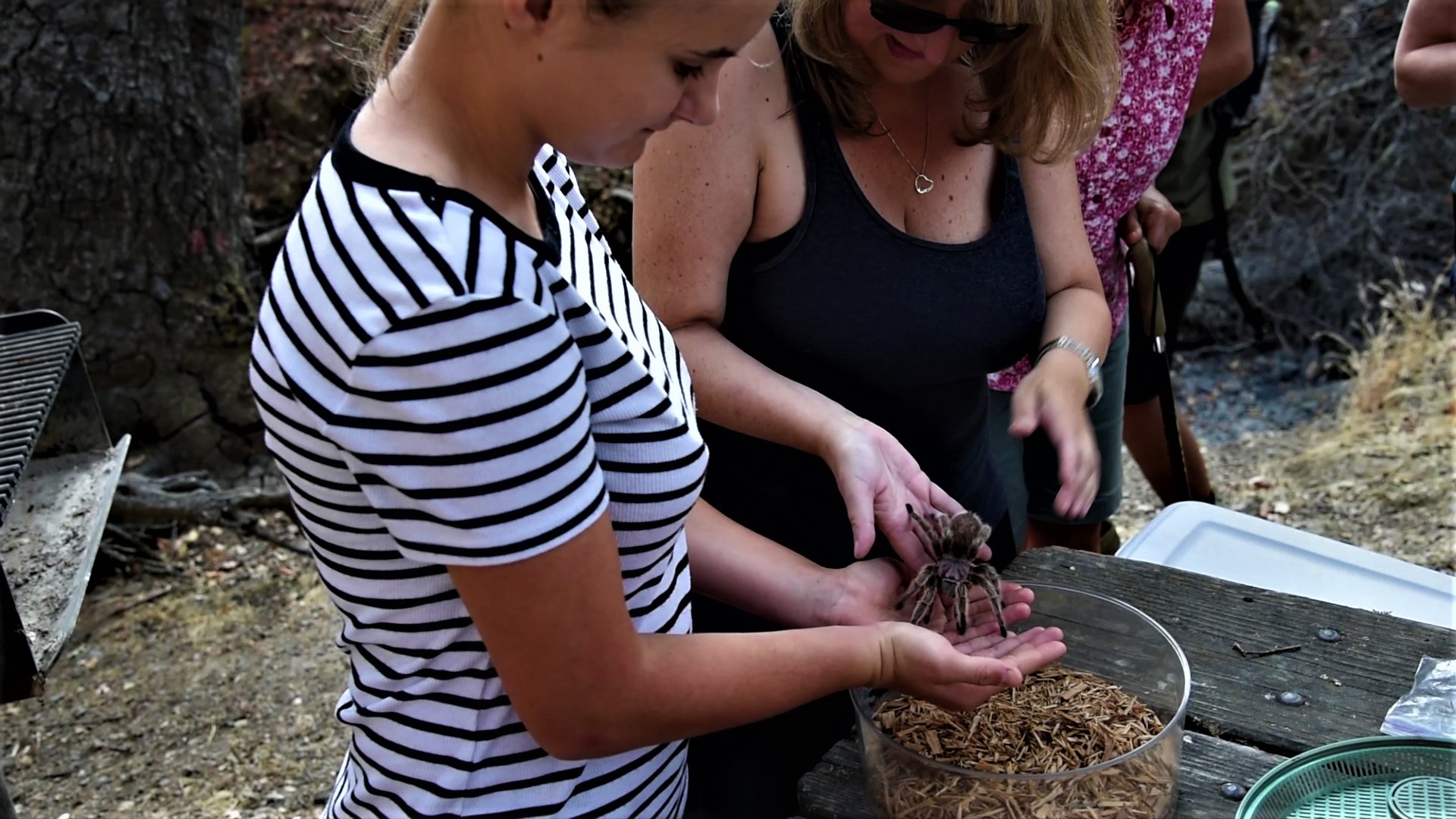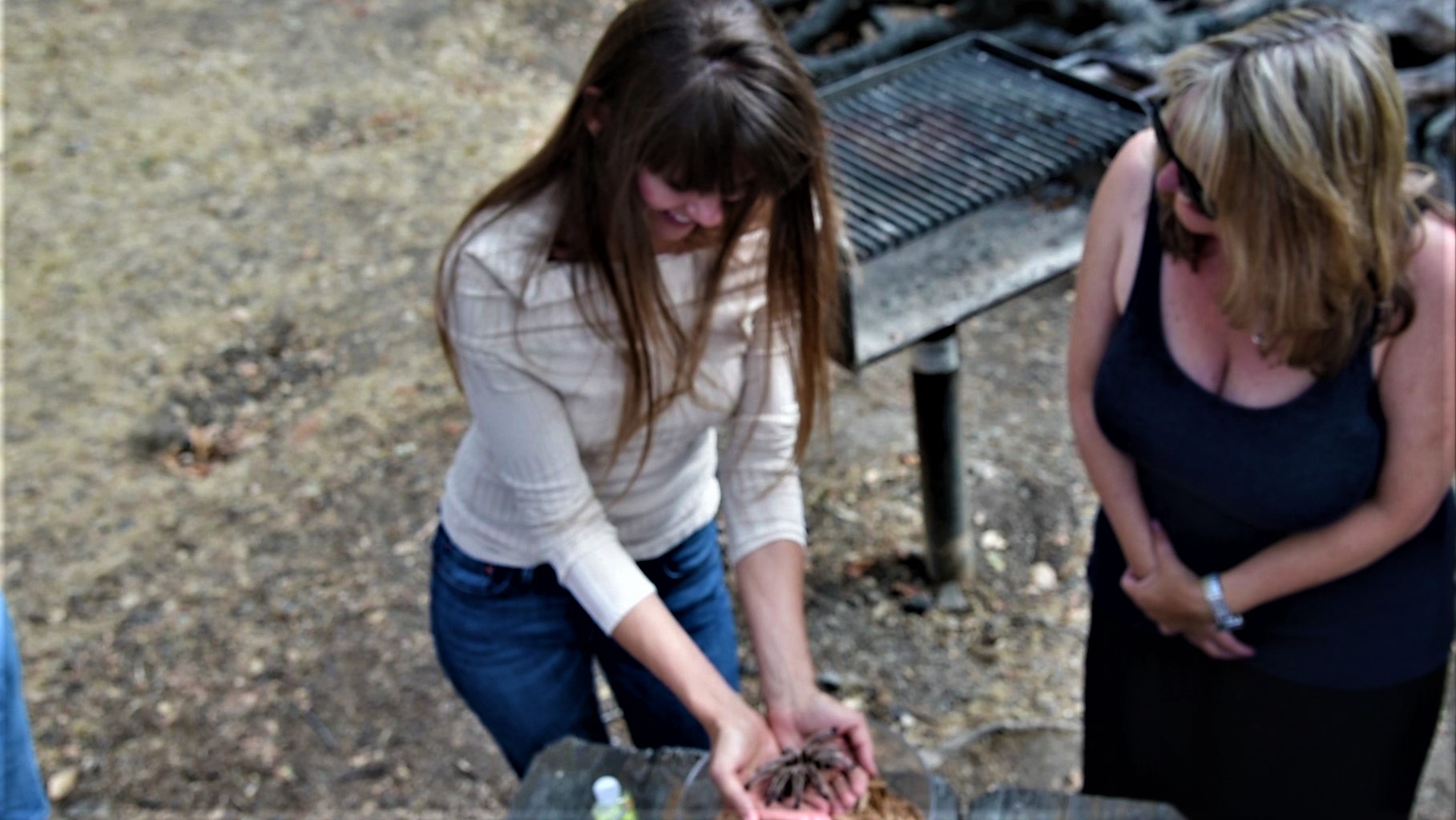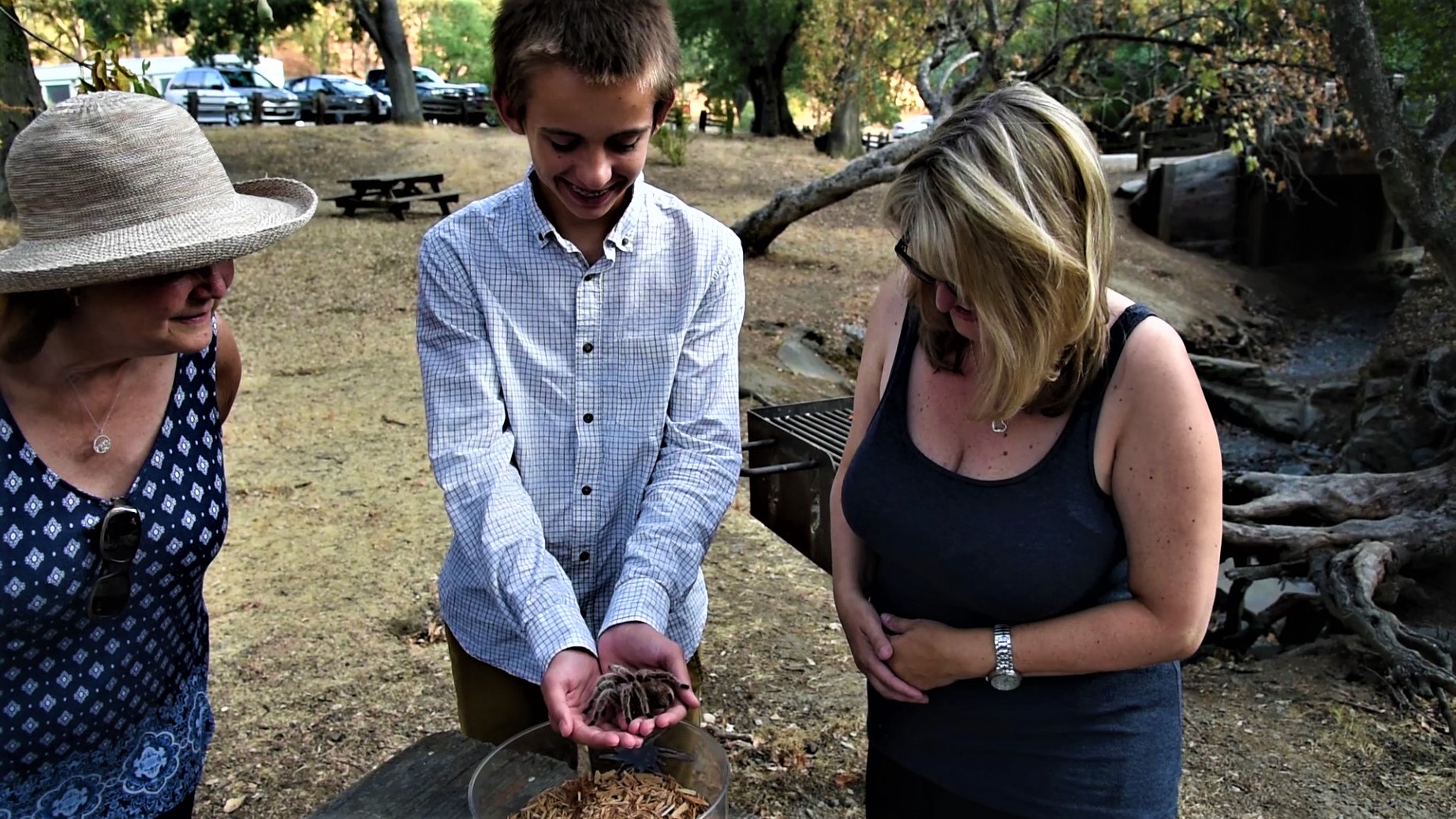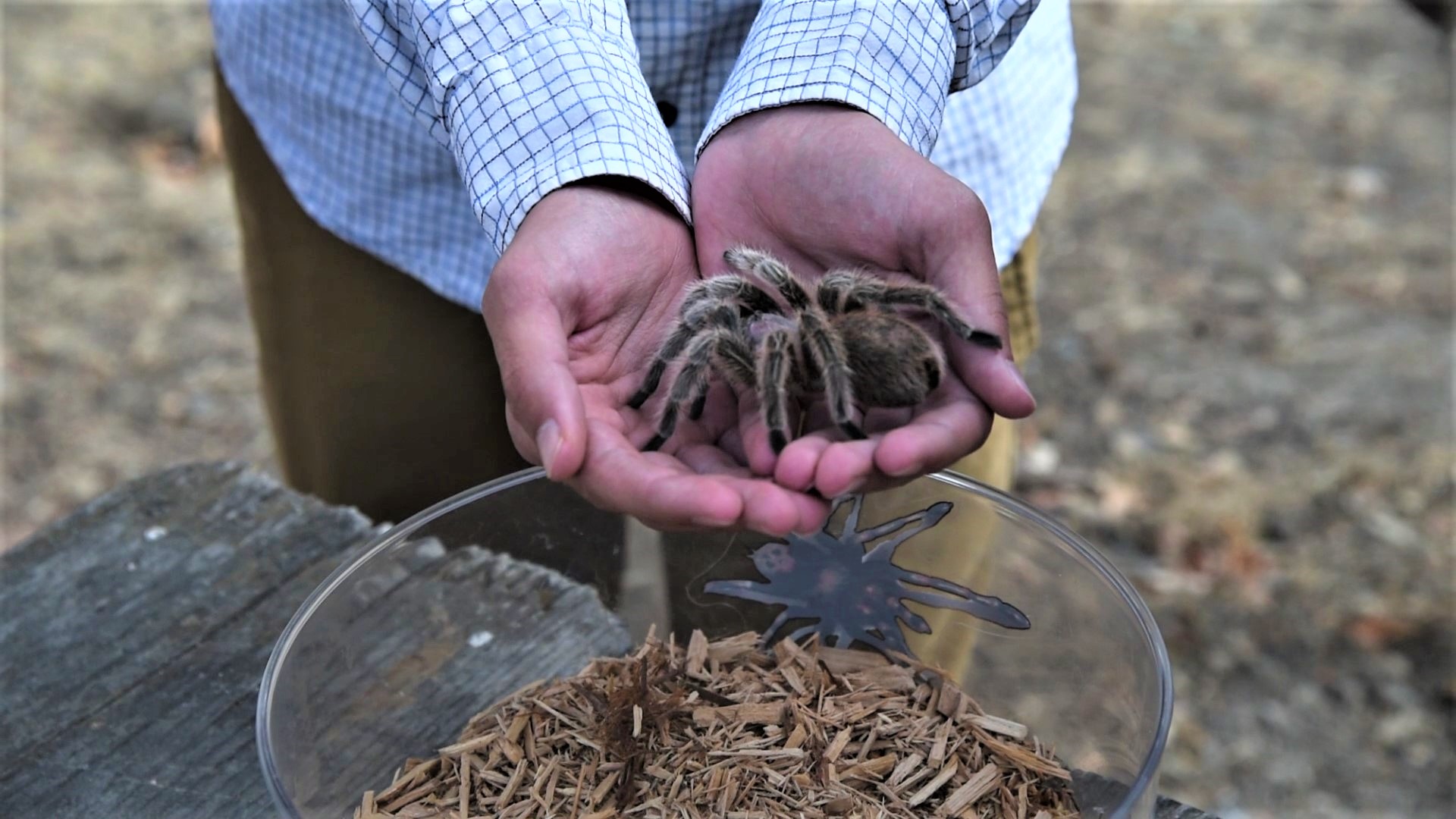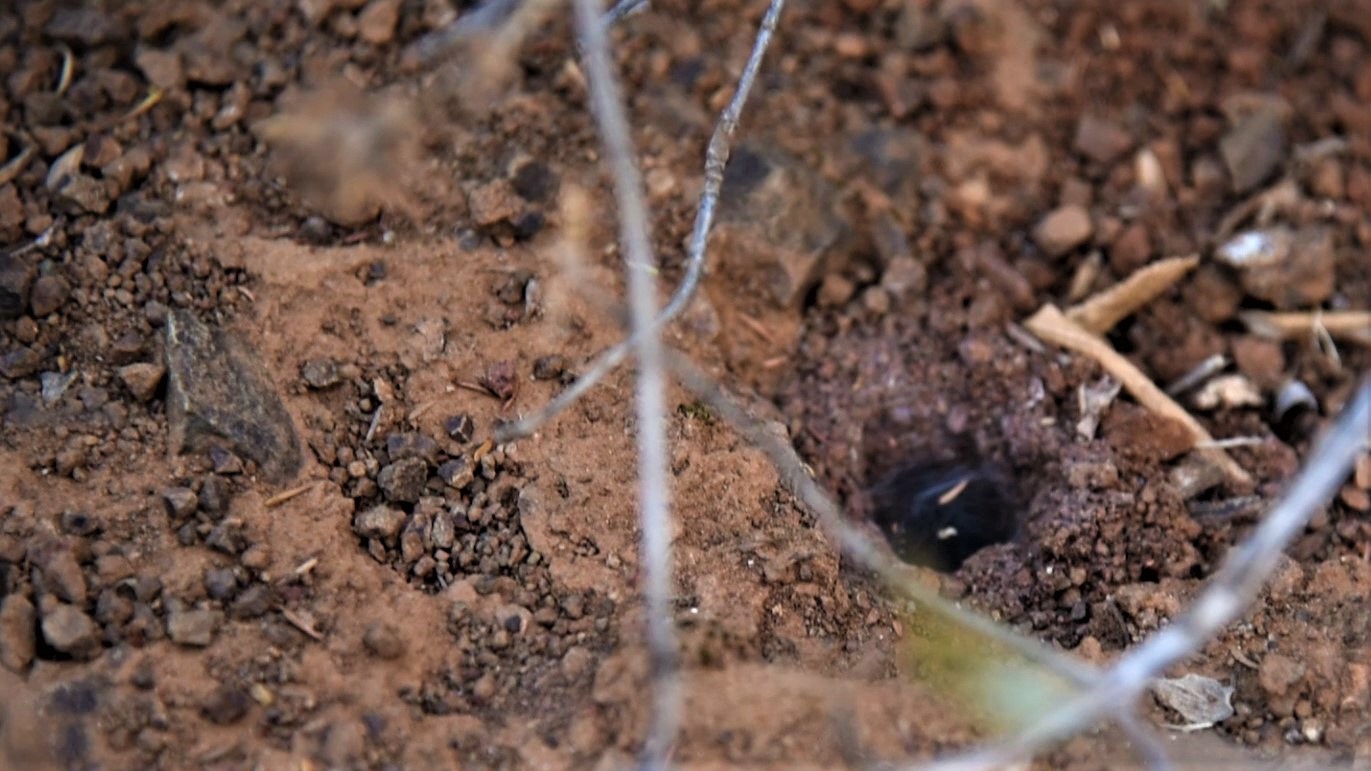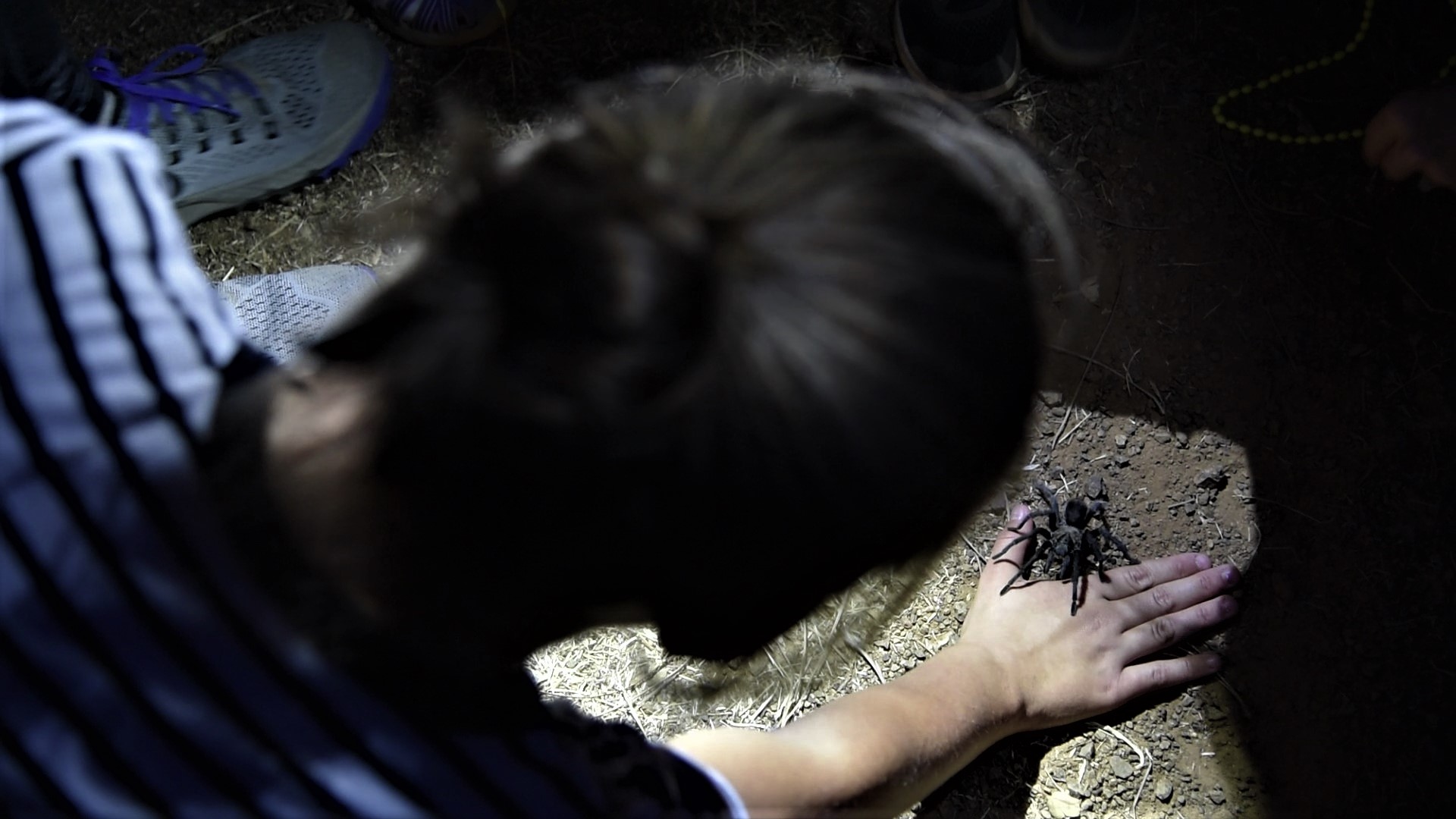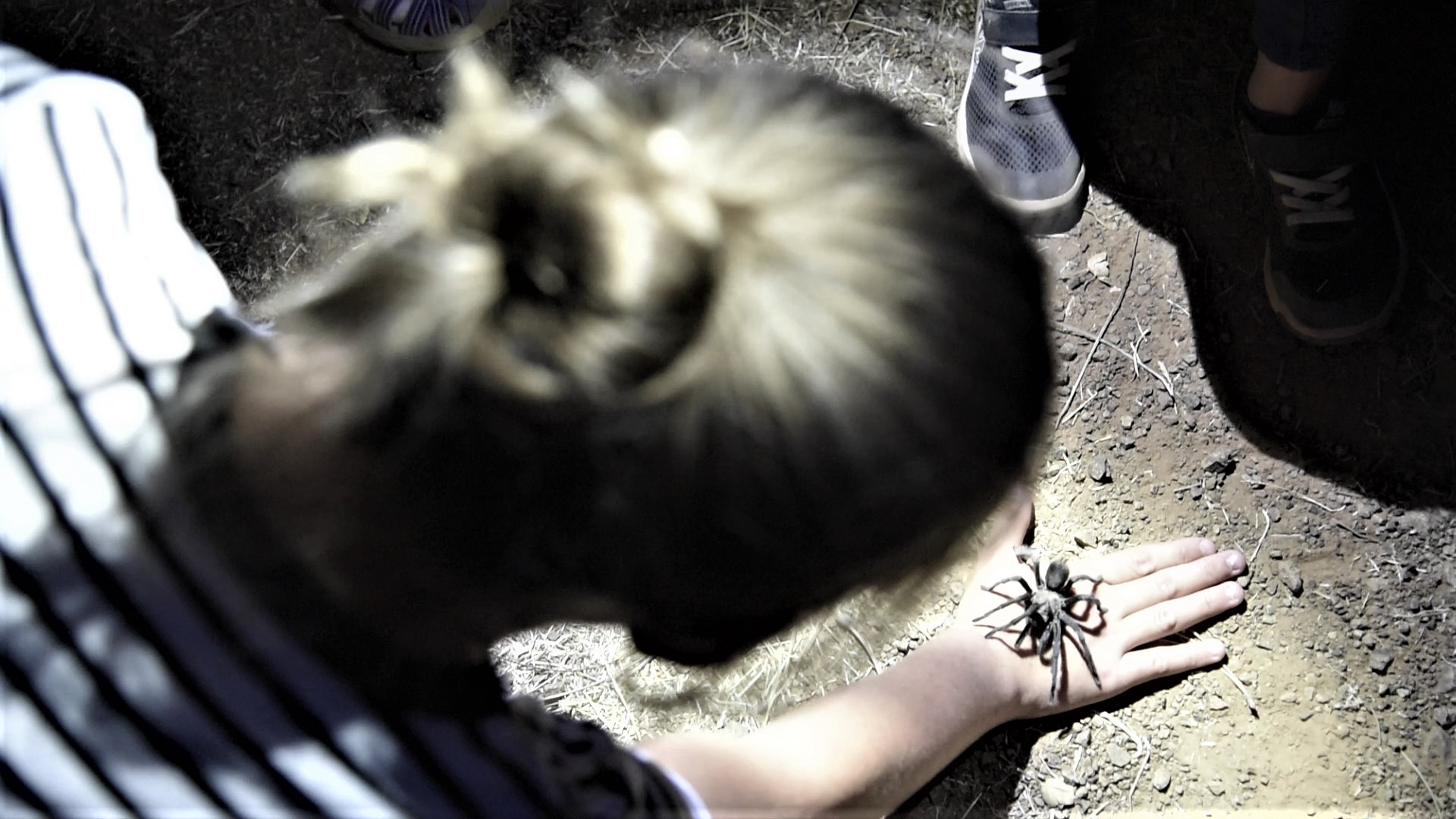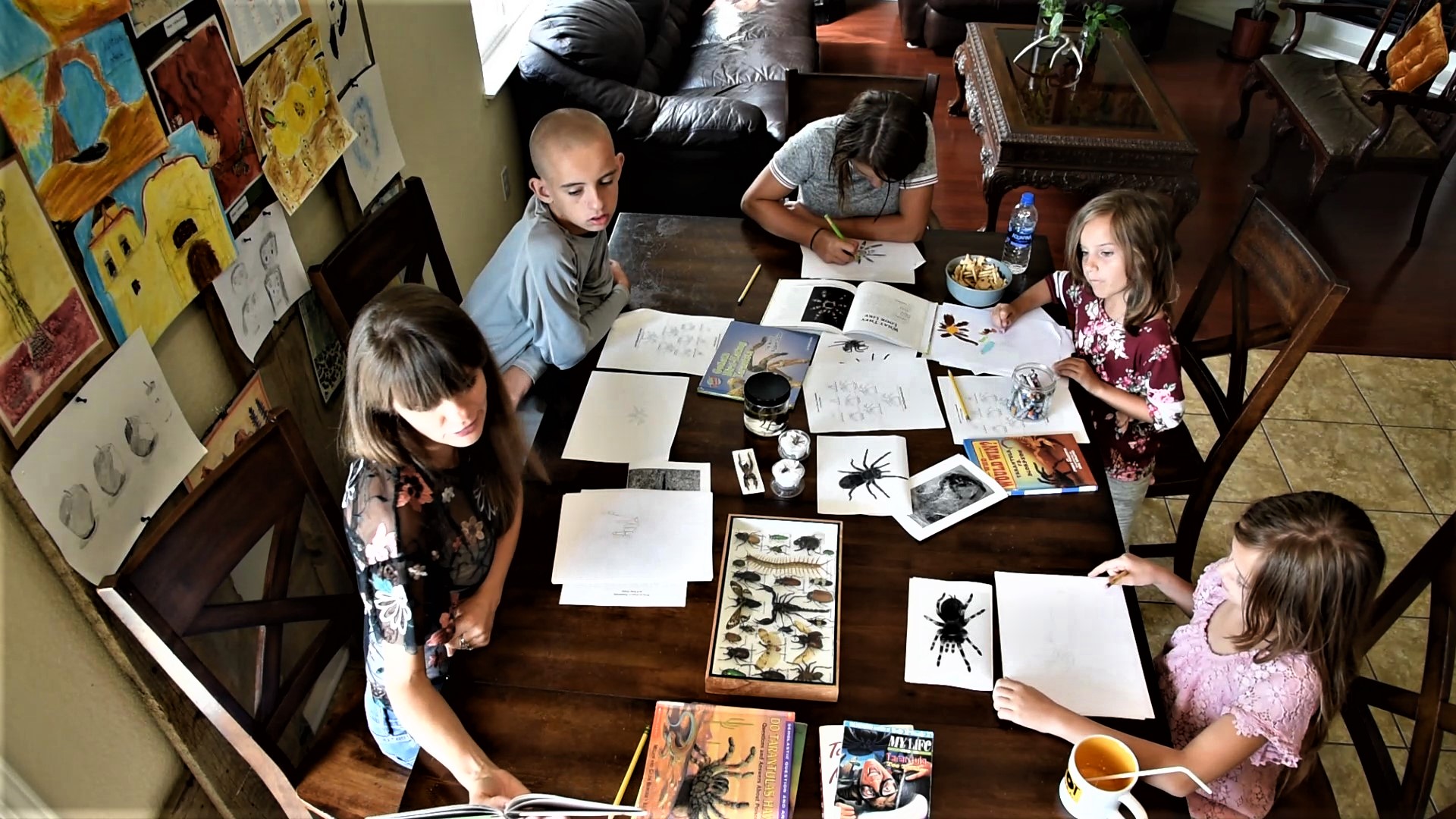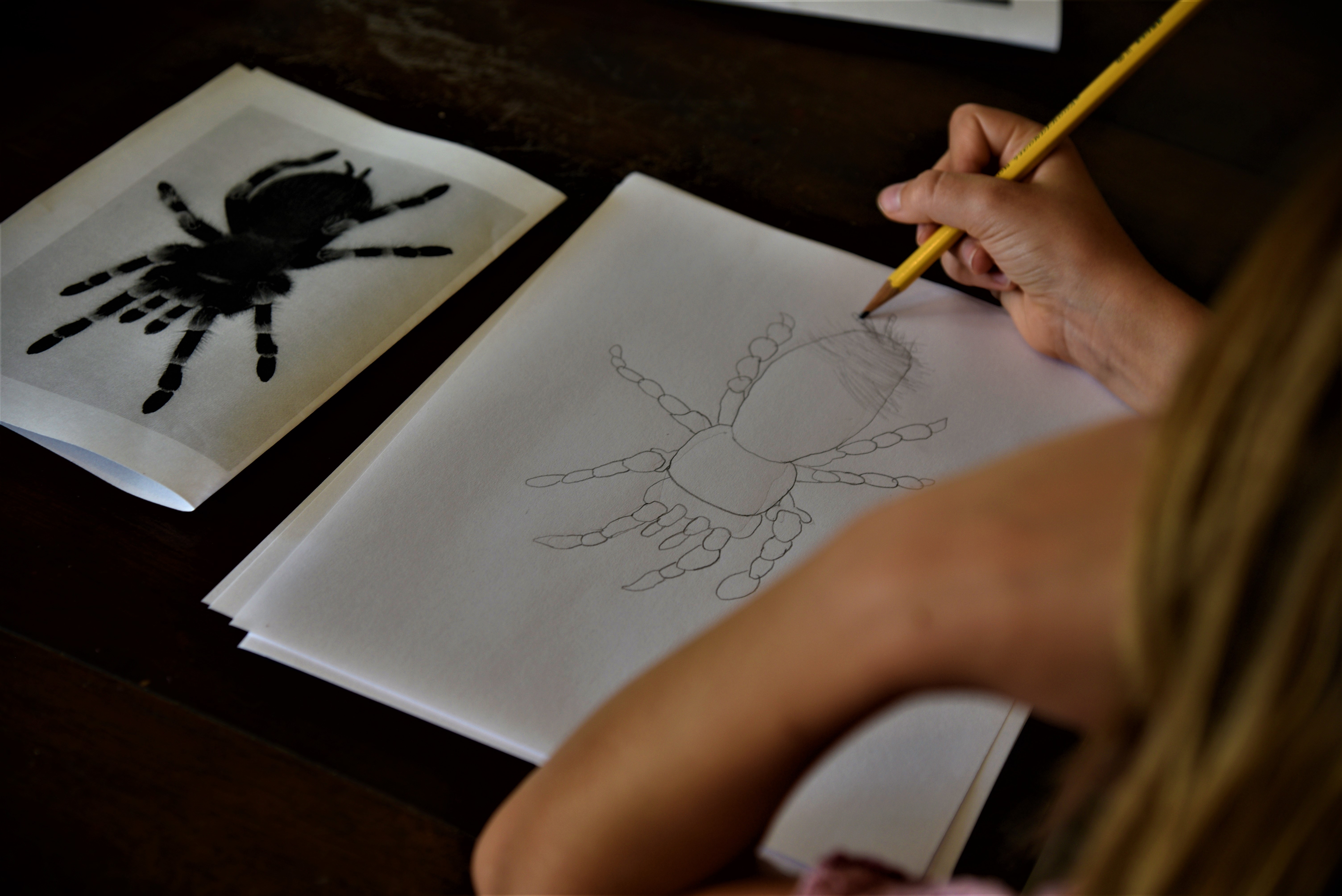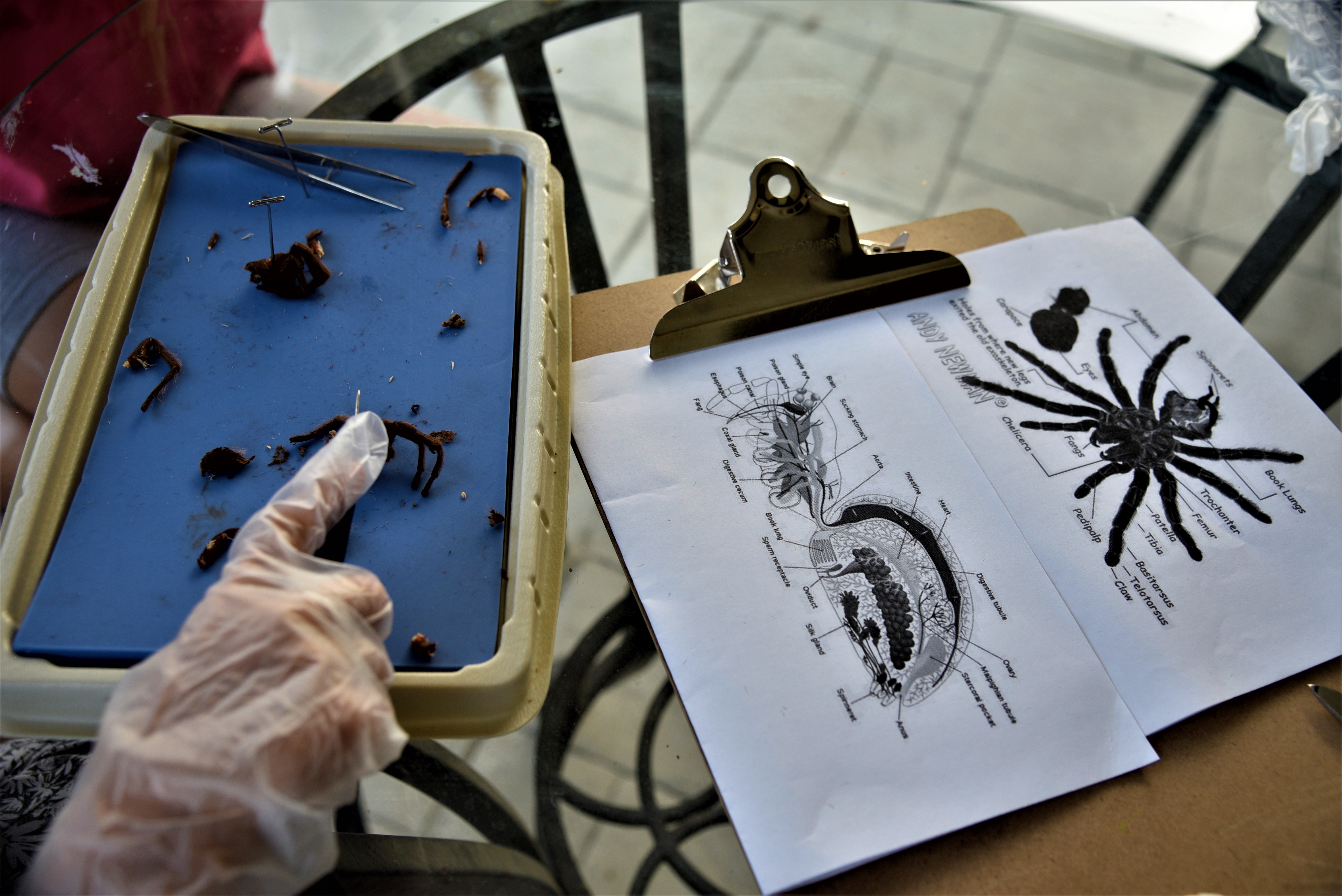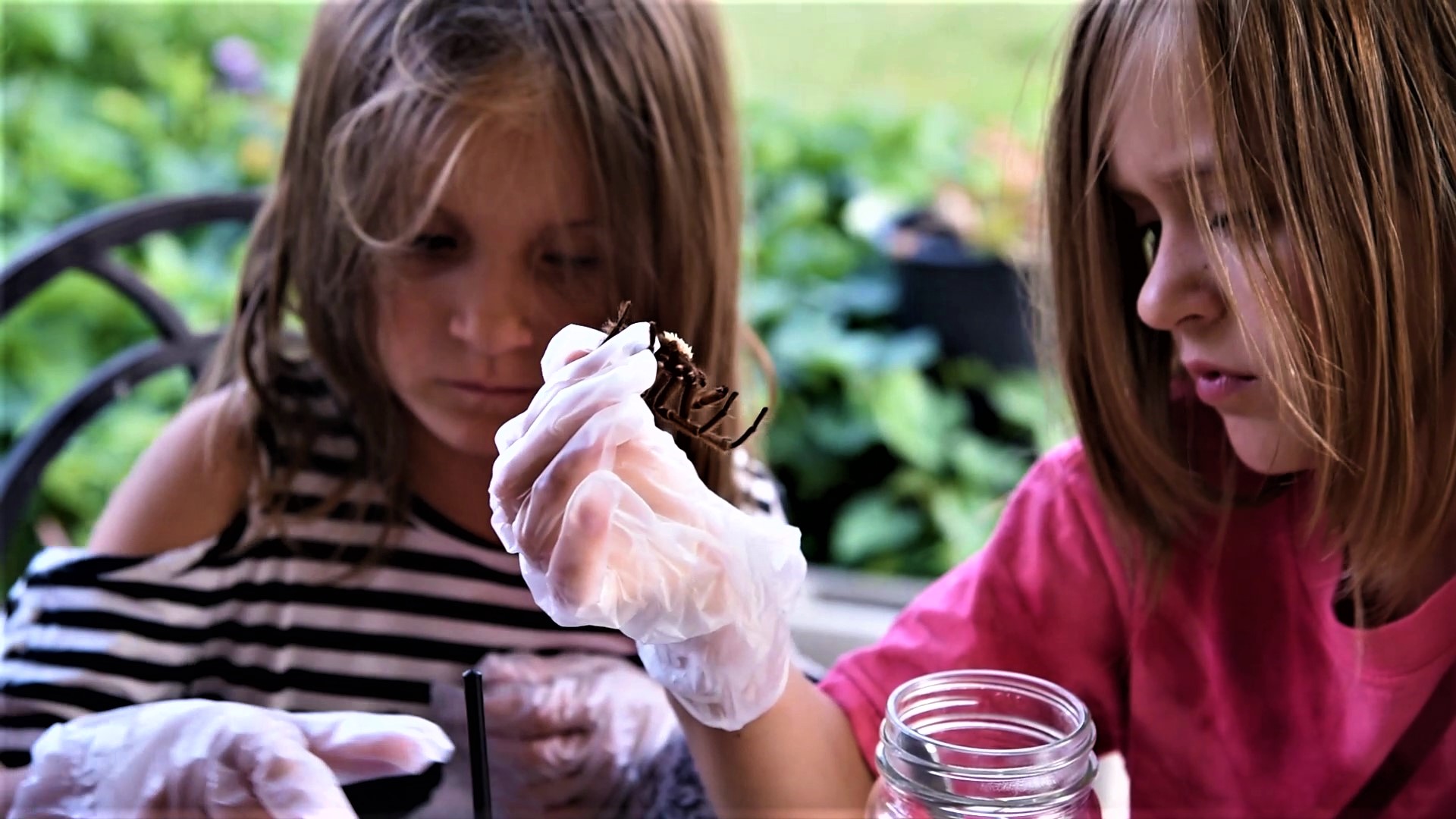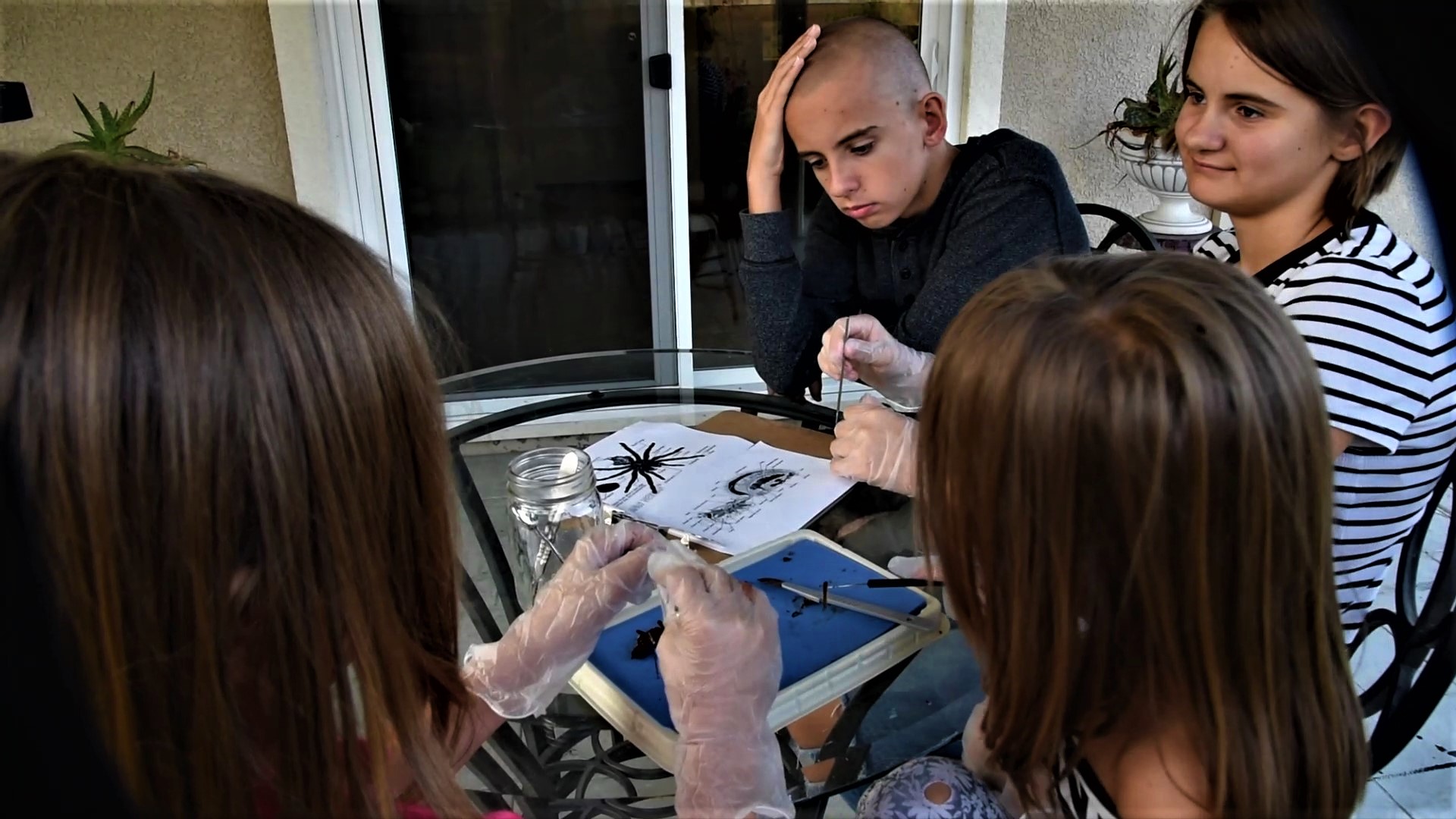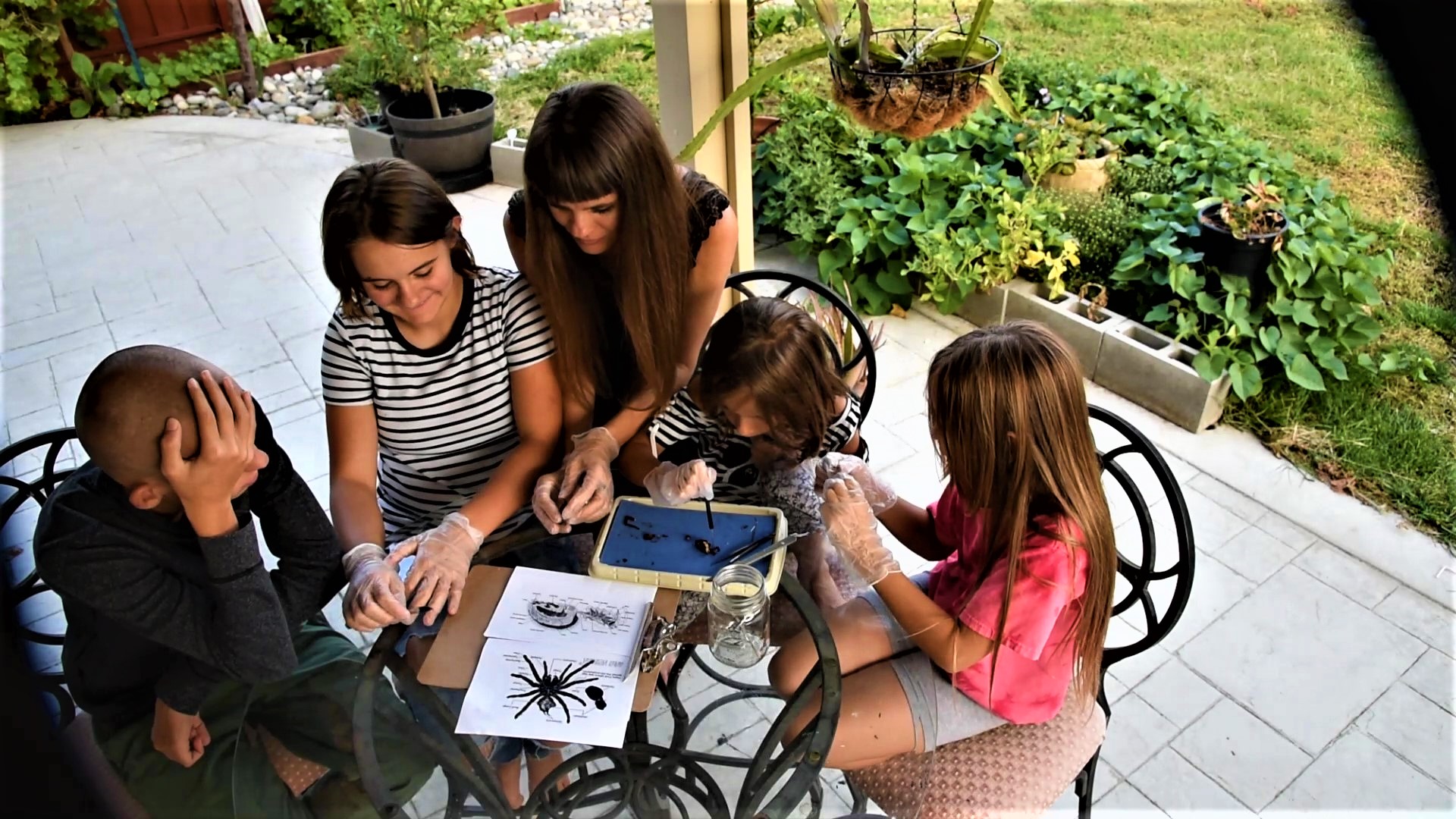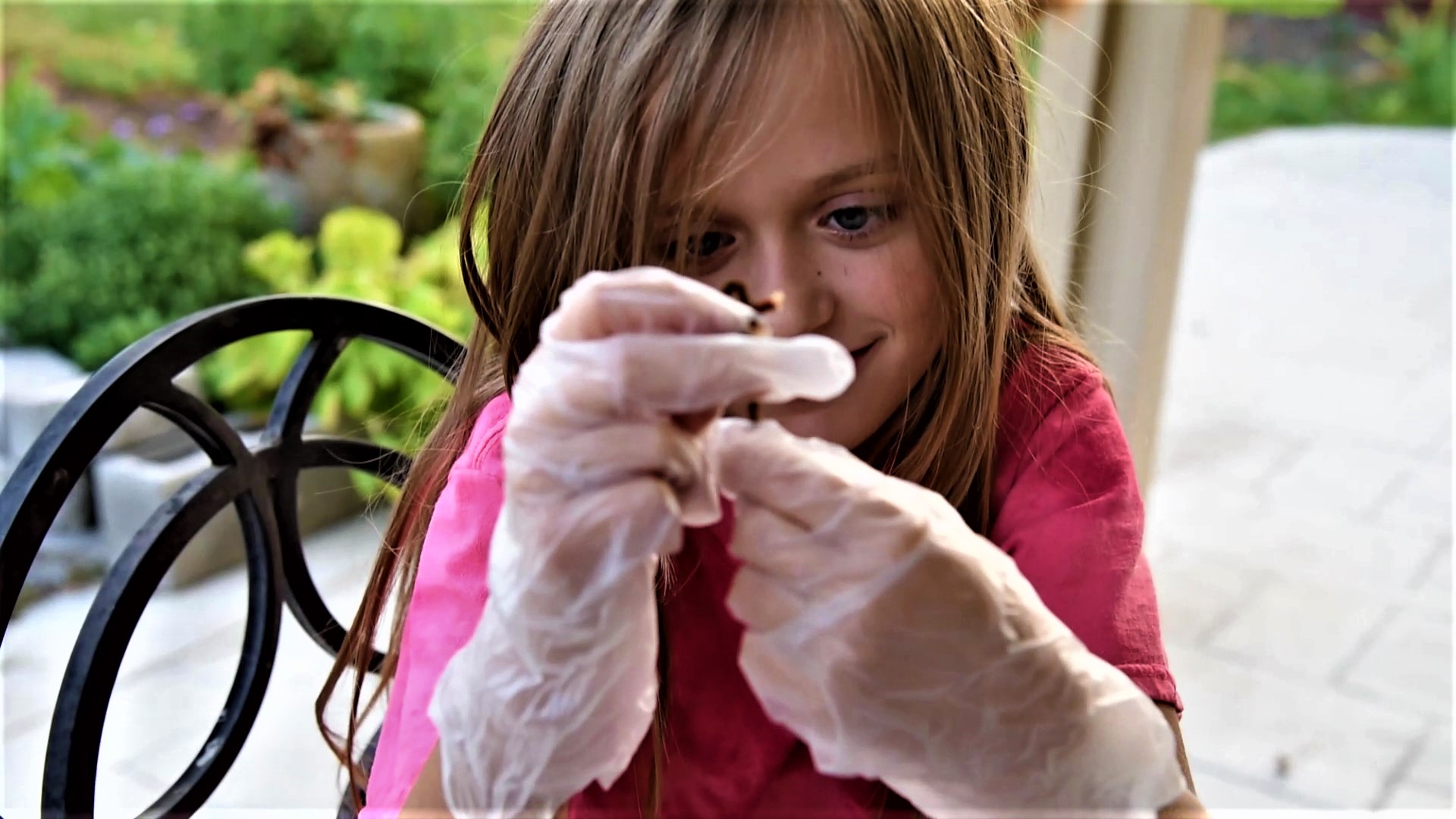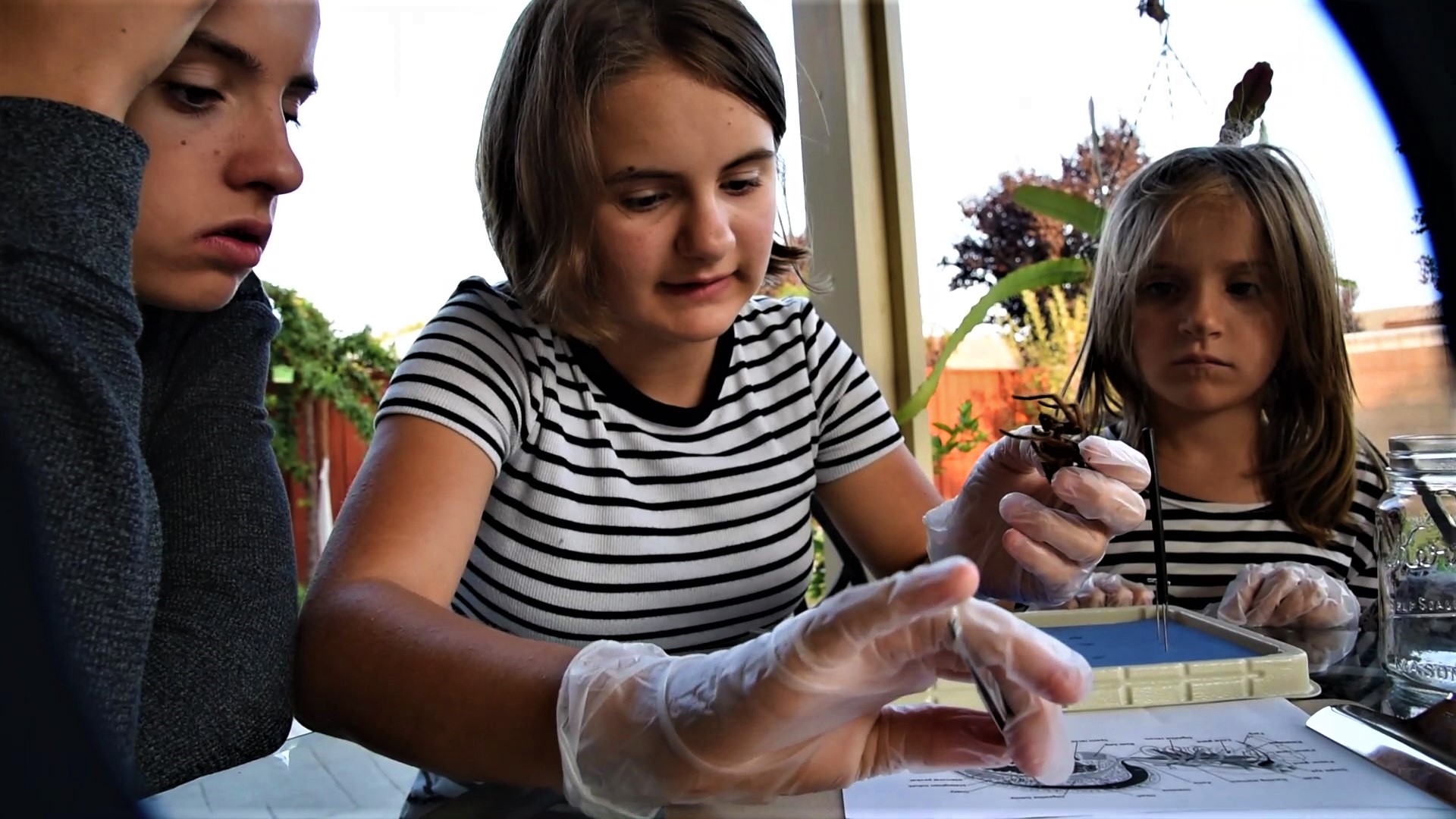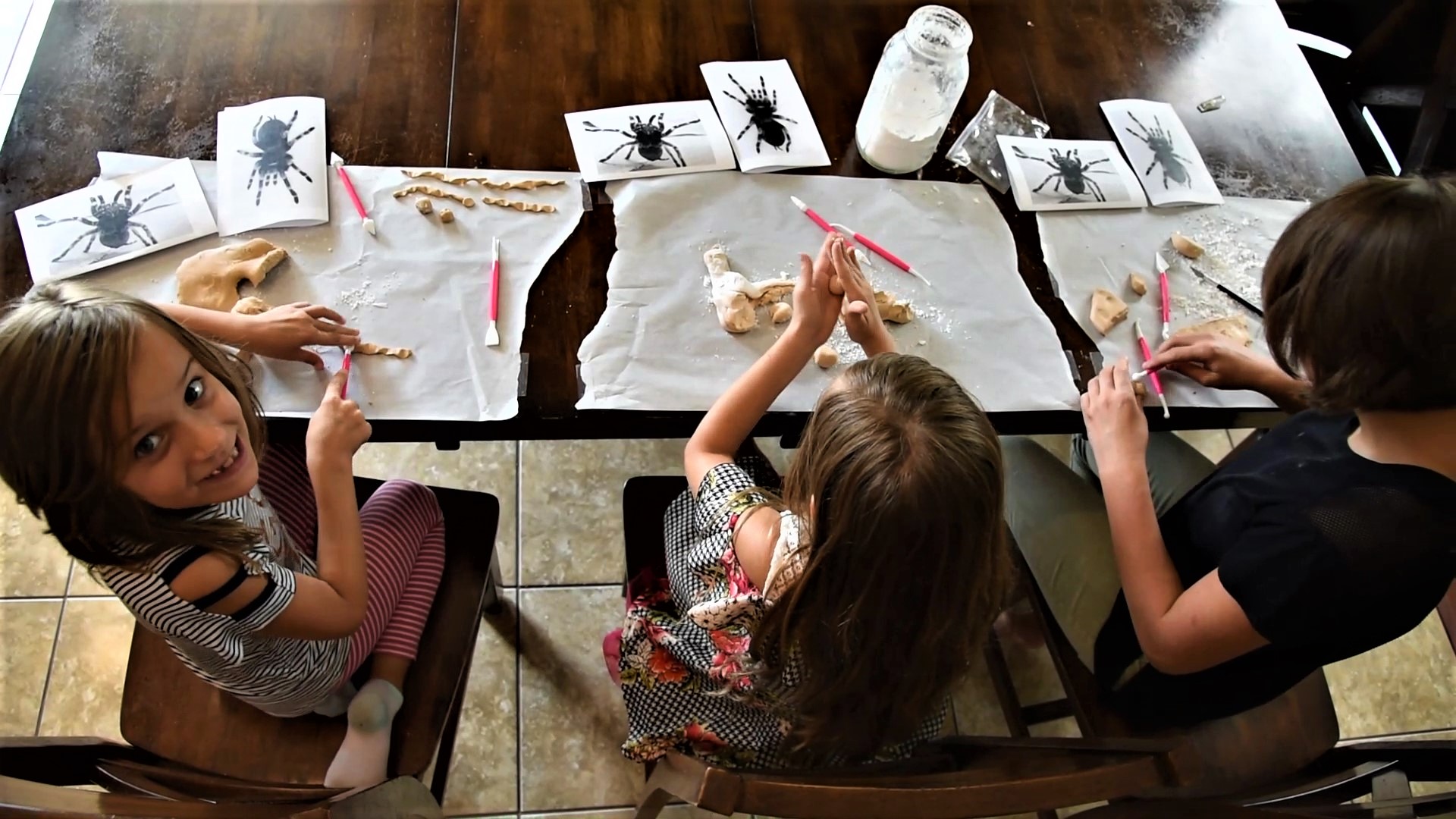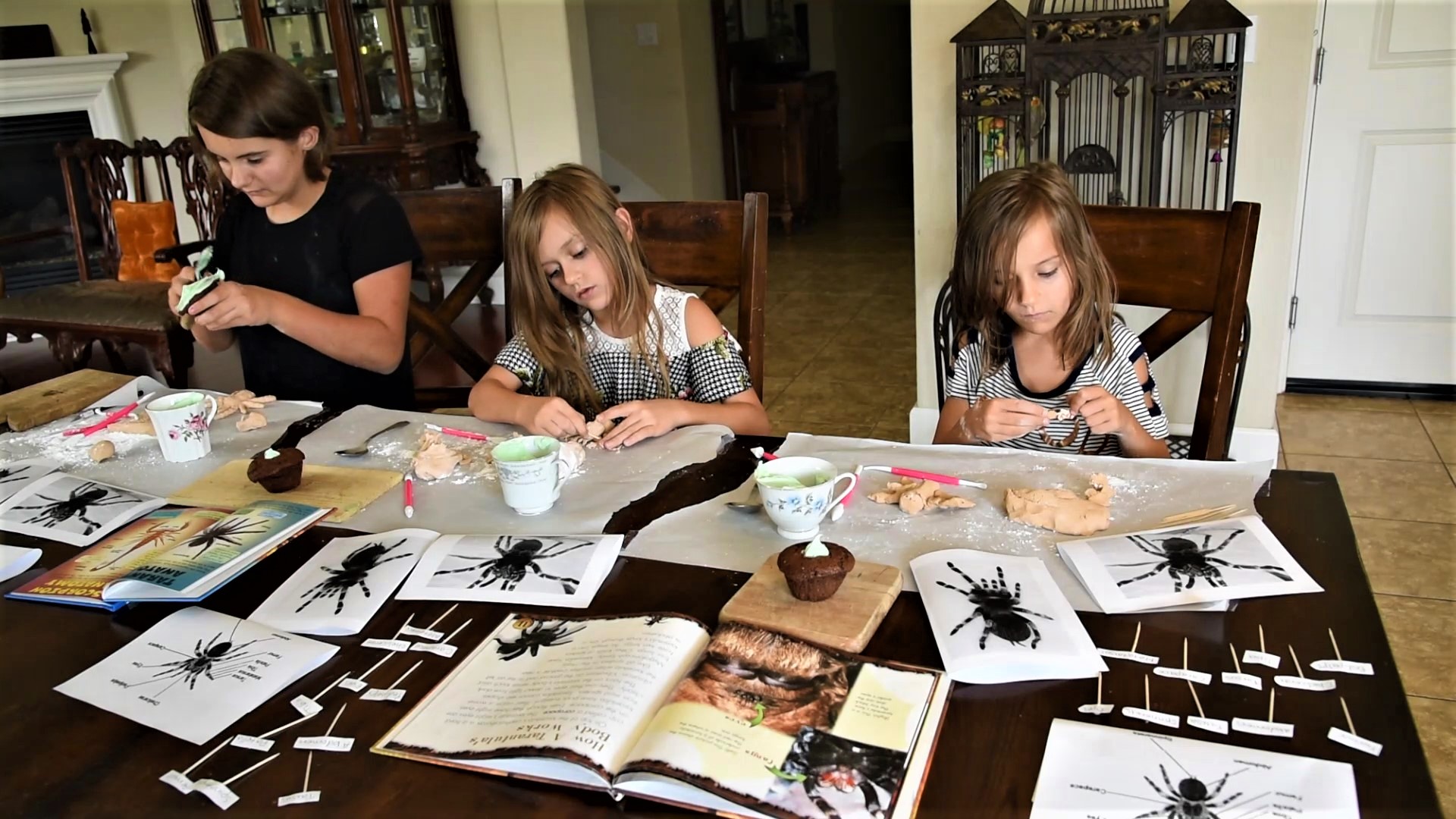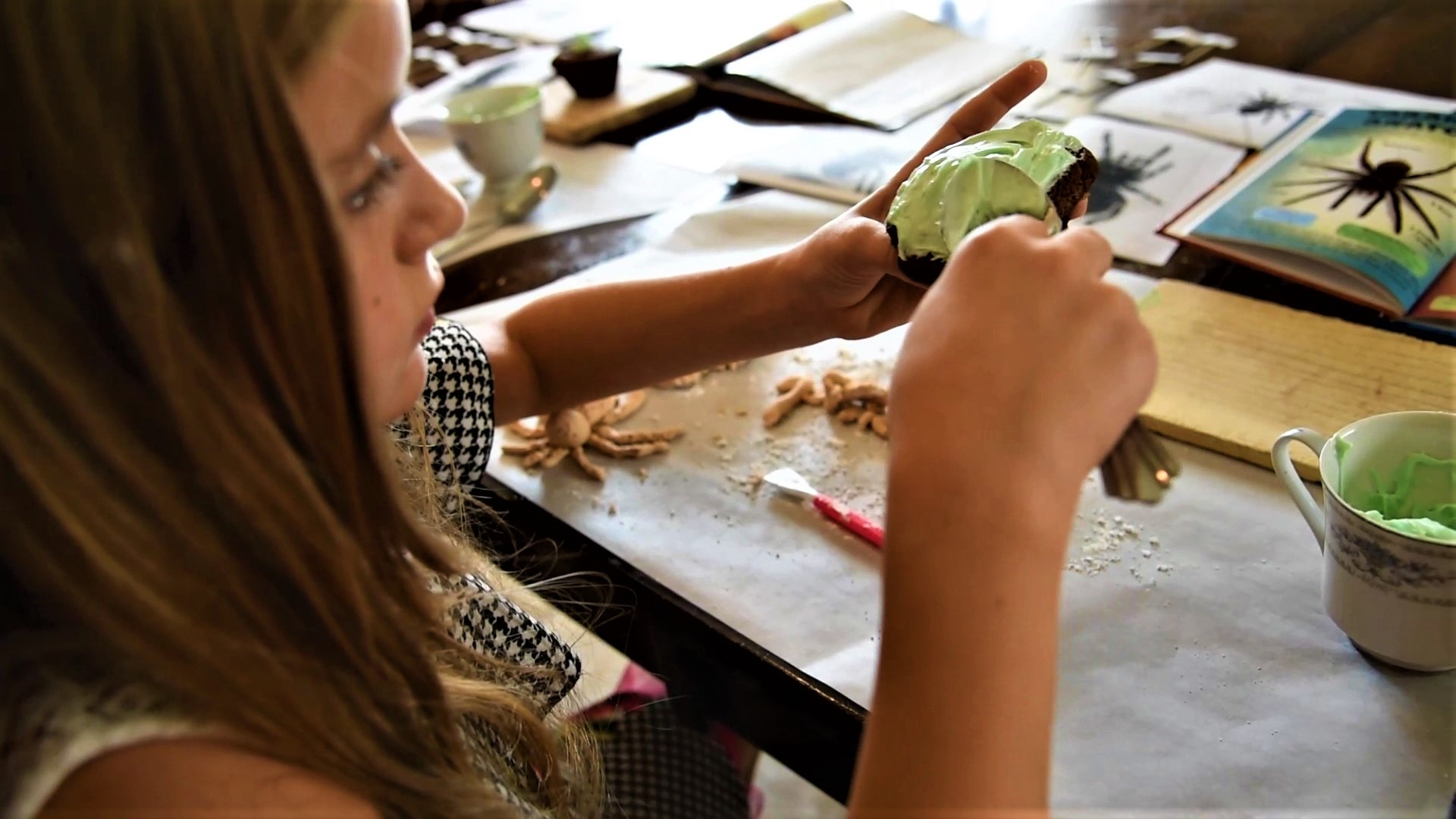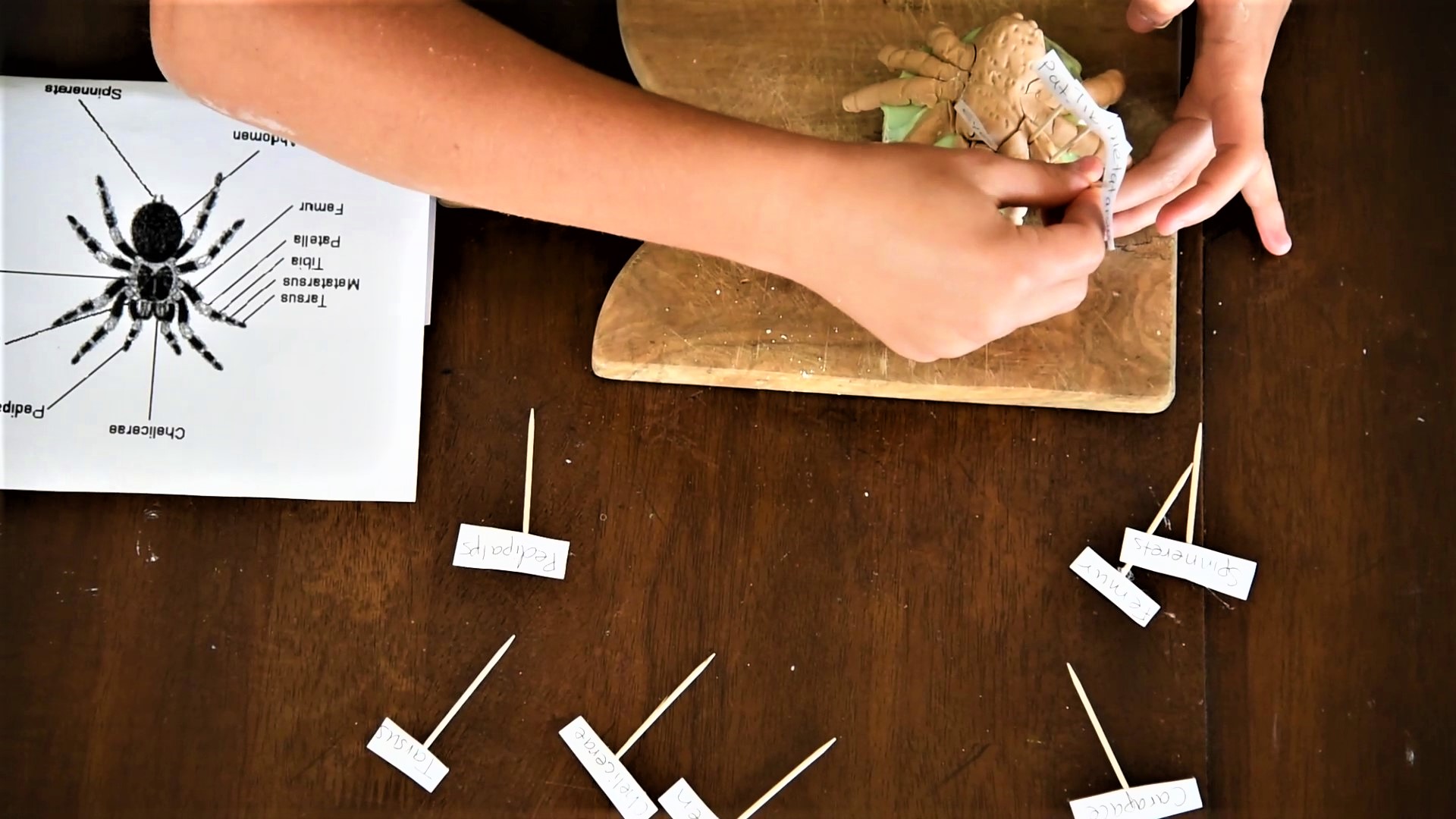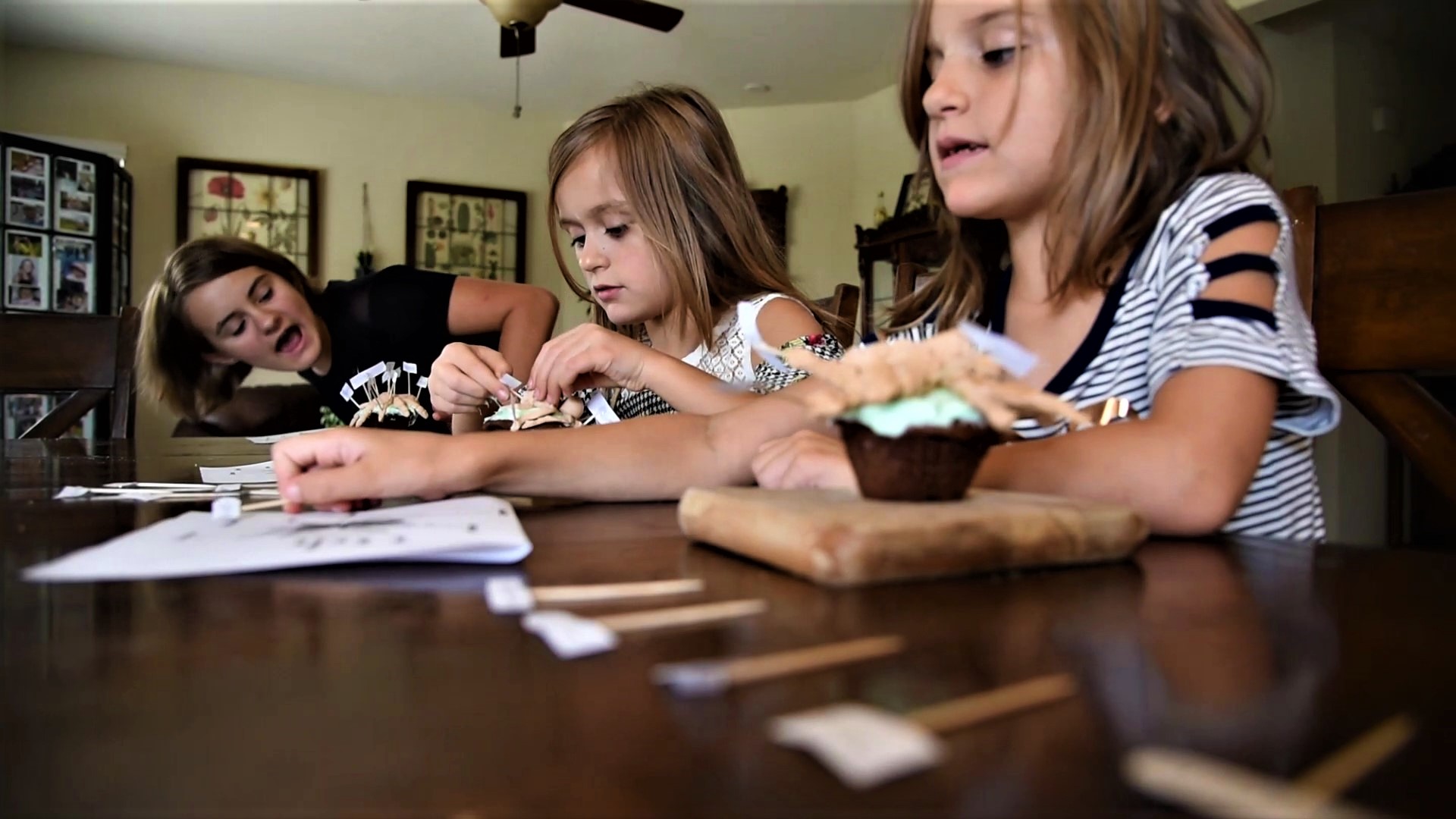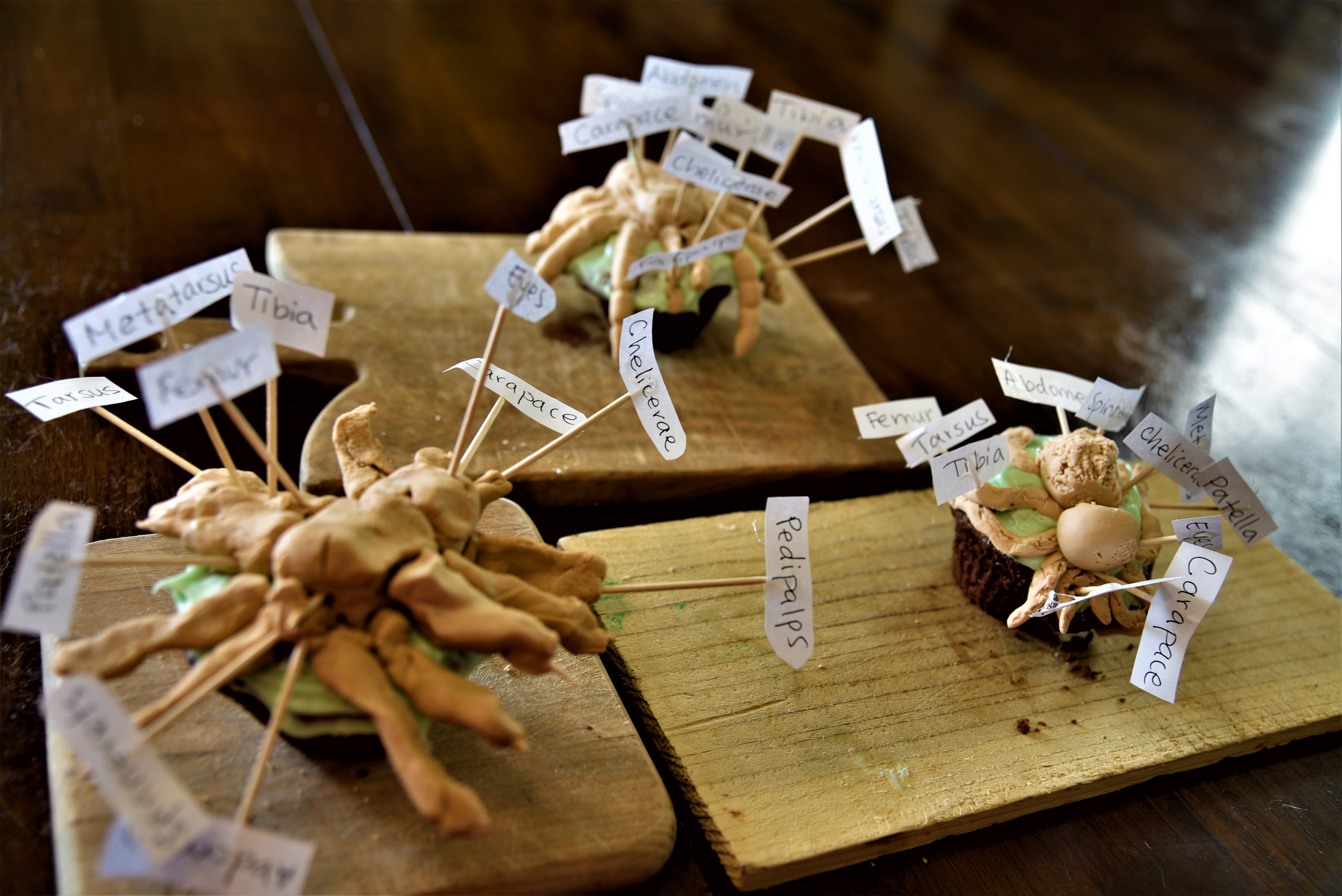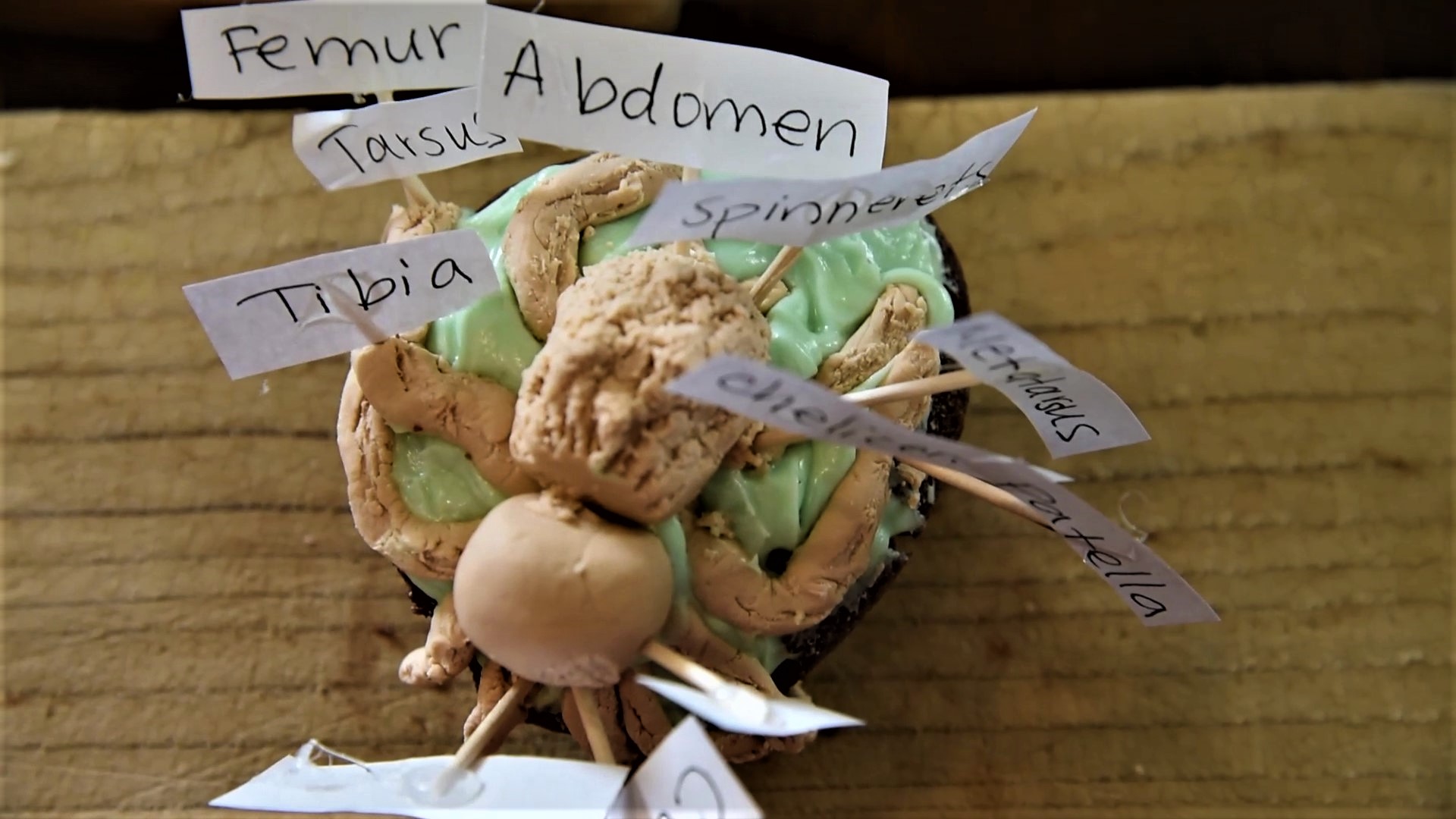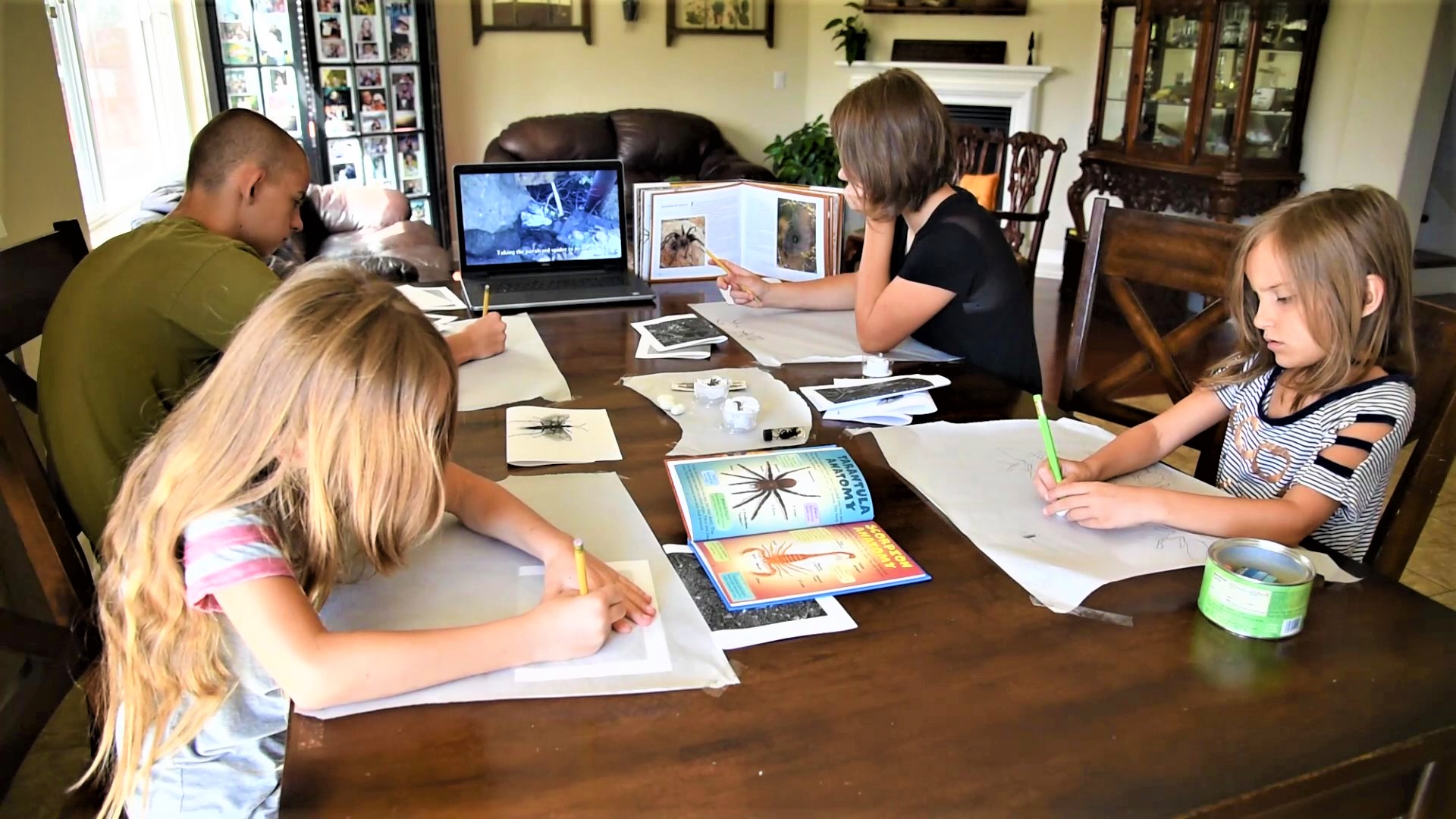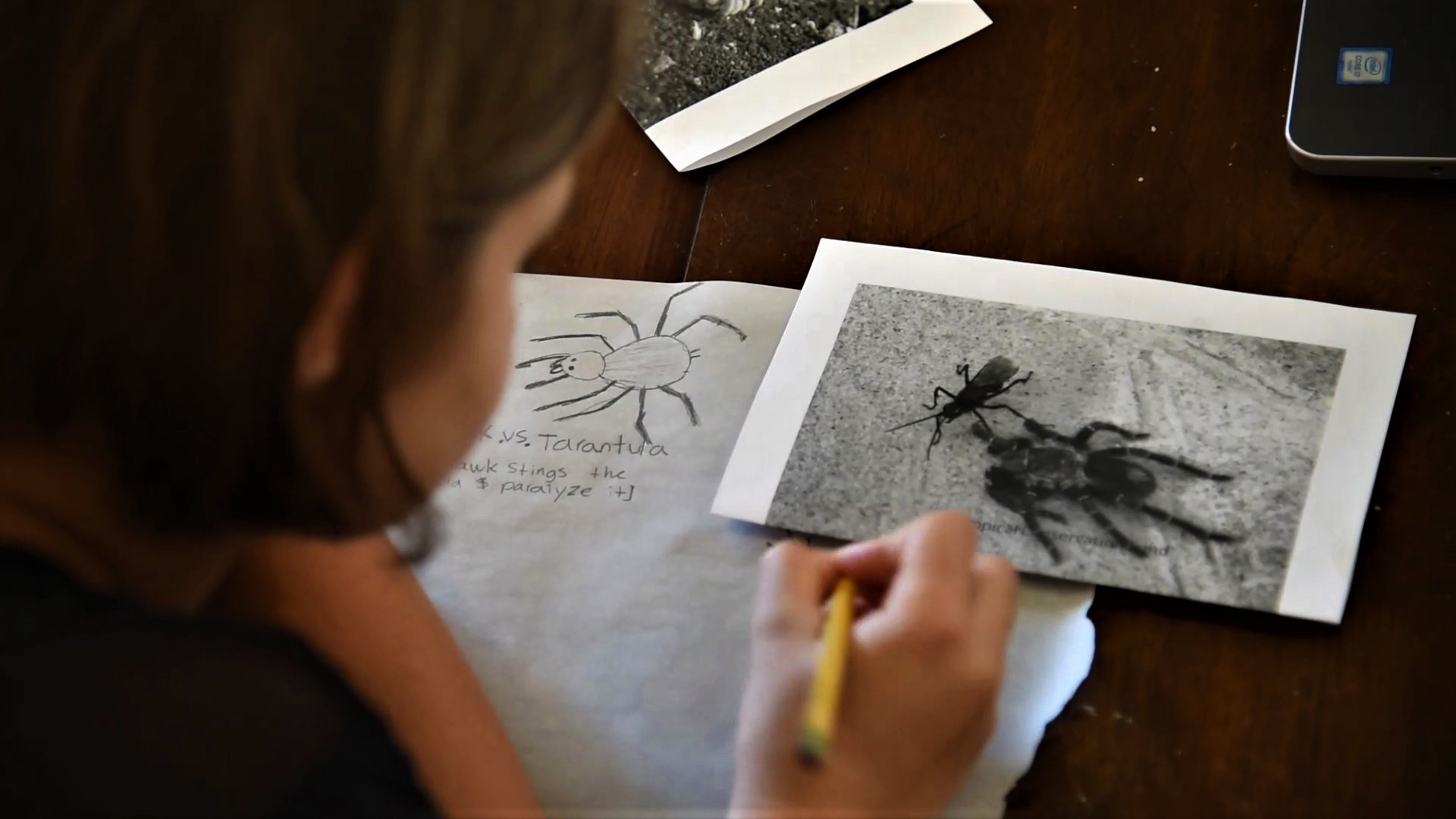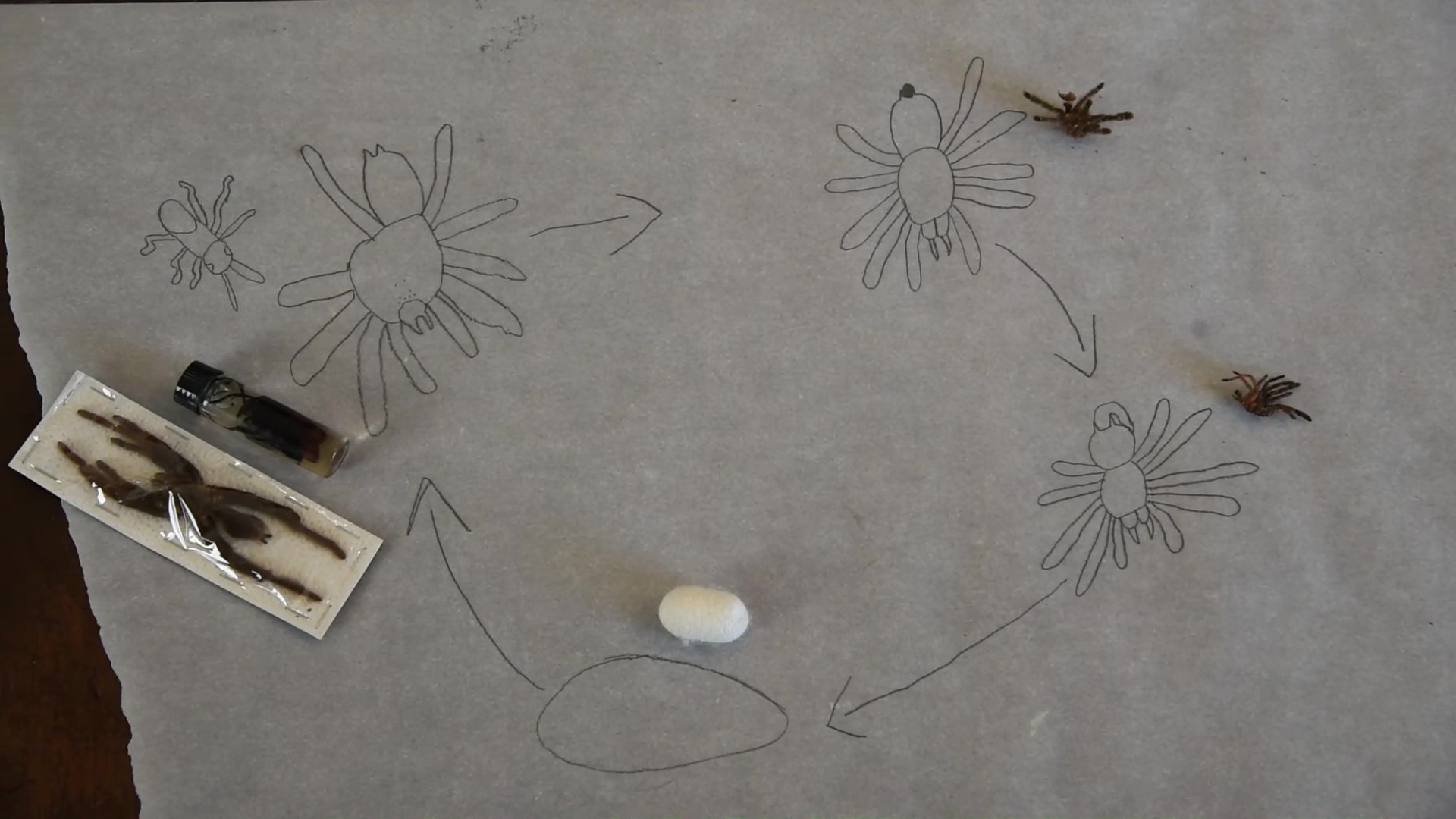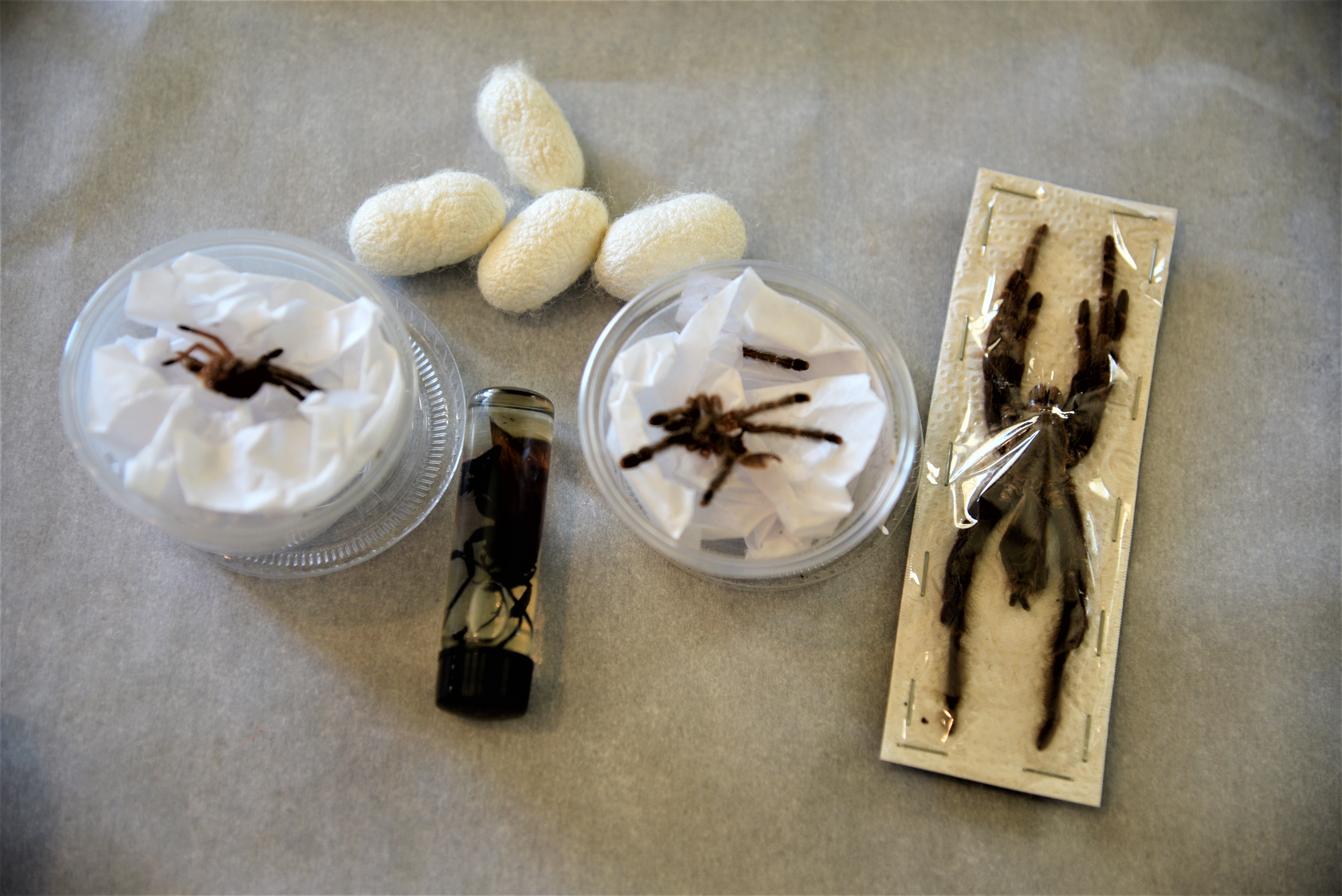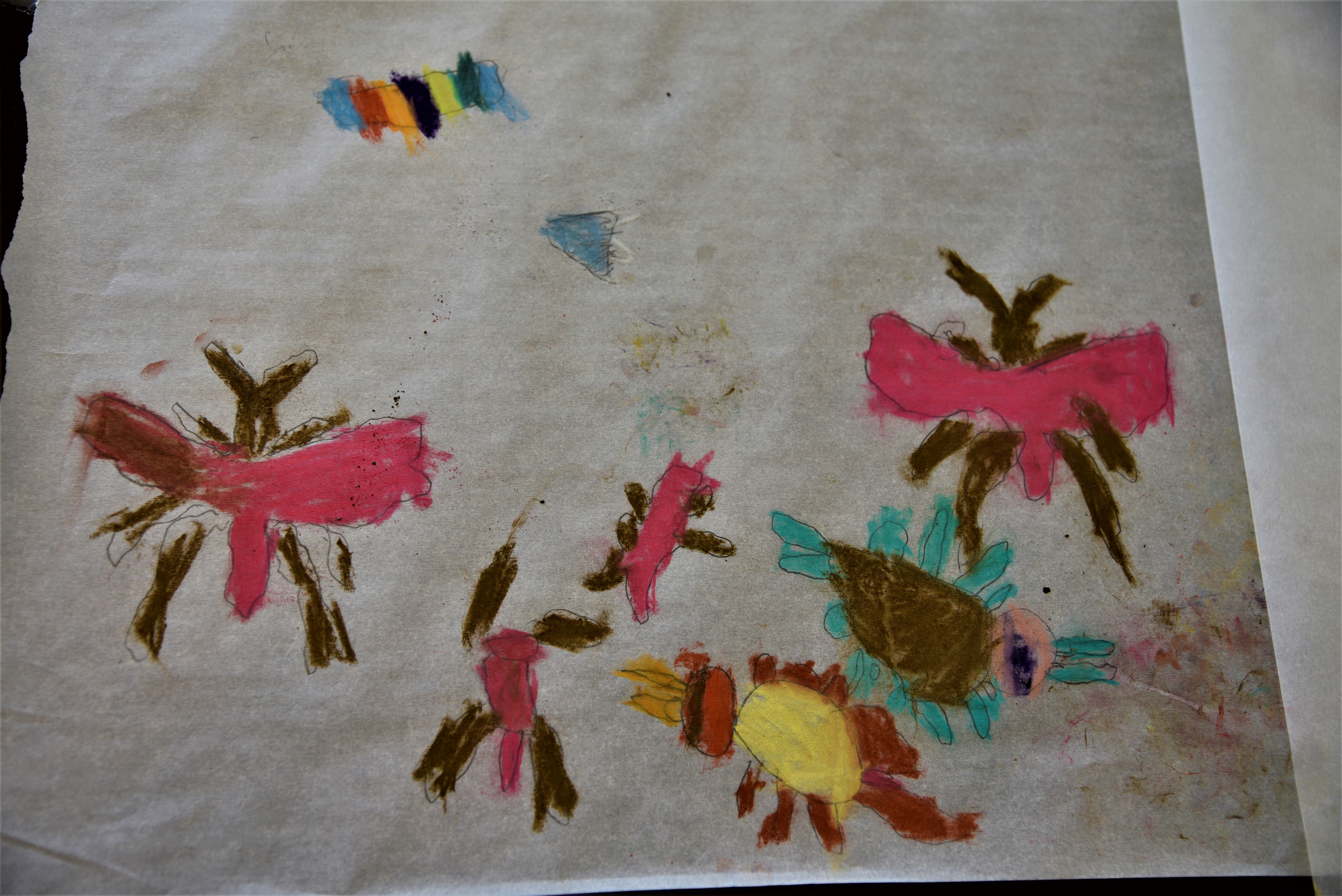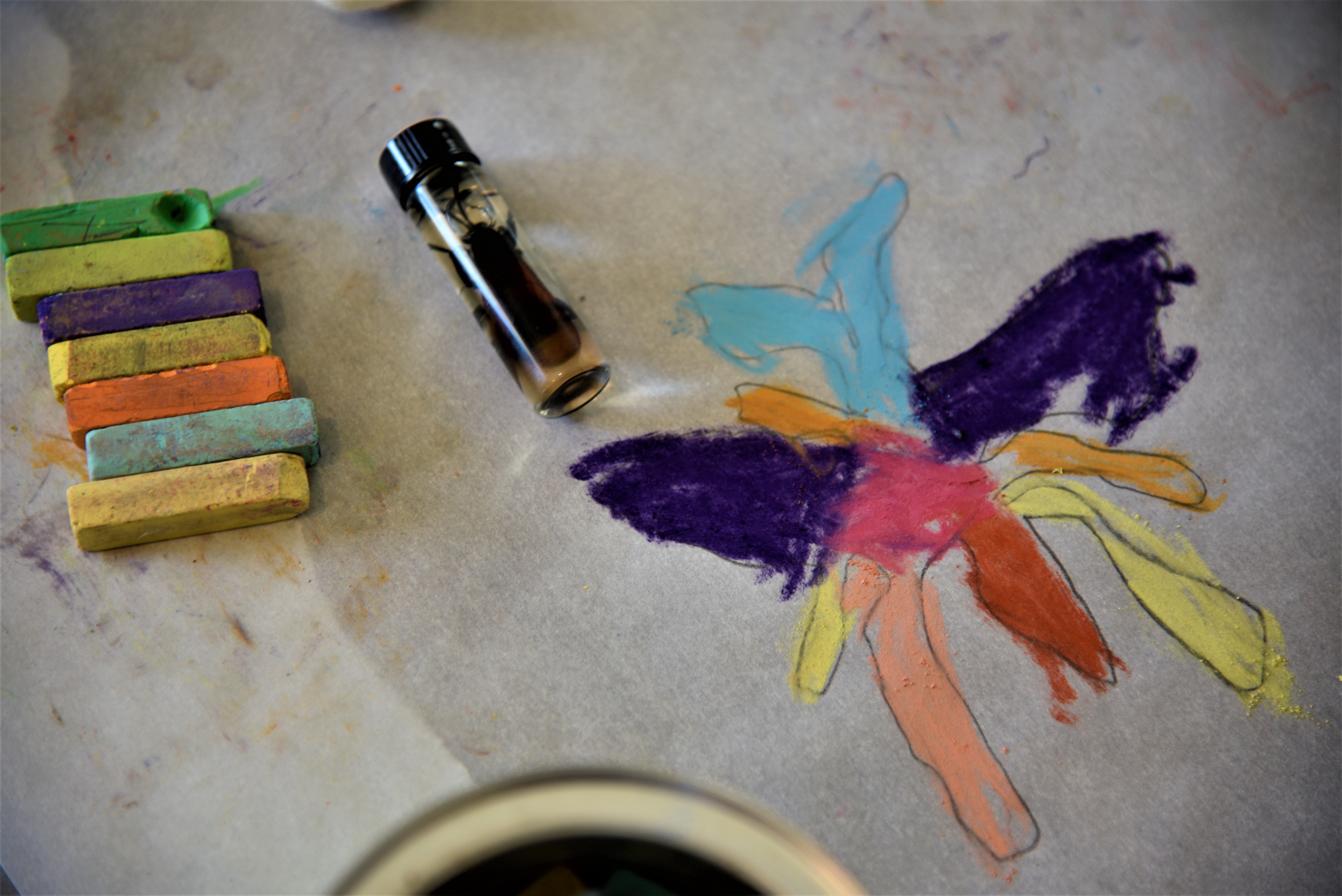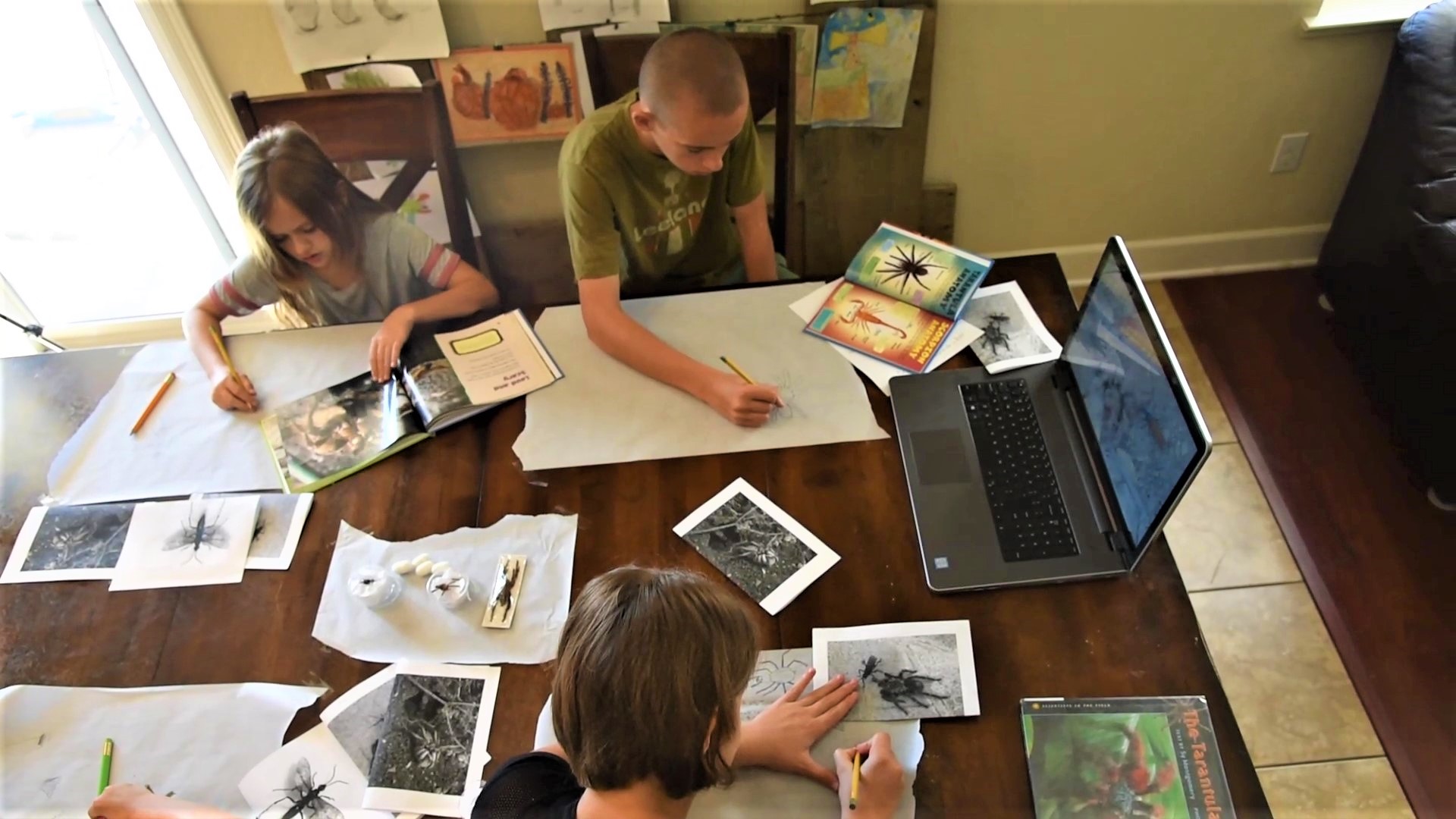When we first moved to the country and I saw a tarantula in our driveway I actually thanked my husband for moving us to the country so that I could see a tarantula. Now I had always observed them from the distance because I was fascinated with them but at the same time I was afraid of them. After doing this unit study and actually holding a tarantula I now know that they are gentle spiders. Yes, they are big which makes them pretty intimidating but I think once you read this post and actually hold one for yourself you will be able to agree with me that these spiders are pretty sweet.
Tarantula Trek
Going to their environment and seeing them in their natural habitat is probably the best way to get to know these amazing spiders. This is where I really fell in love with the tarantula. I have always been fascinated with tarantulas but I was intimidated my their size and the way they look. Before this walk I would never dare hold a tarantula. I first closed my eyes and I was actually shaking while holding the beautiful, light, and furry spider. It was such a cool experience. On this trek we first learned all about the tarantula. We were also able to hold “pet tarantulas” and then we hiked to find the tarantulas burrows. It was so neat to see the silk covering varies holes on the ground. Those where female burrows the ones who put silk over the burrow. The males are the ones you will find out and about looking for a female to mate with. We were lucky enough to find one before it was too dark. It walked over Esther’s hand. She is so brave!!! The guides were so amazing. They really knew their information about the plants, wildlife, and tarantulas.
The tour is located at the Visitor Center : 96 Mitchell Canyon Road, Clayton, CA 94517. It started at 6pm and ended around 9:15 pm.
If your interested e-mail sweettrails00@gmail.com or look up Tarantula Trek in Mount Diablo State Park.
Reading and Drawing the Tarantula
There are so many books out there about tarantulas. If you have been following us for awhile you know that the first thing we do is read and draw what we are learning about.
Did you know that not one single person has died due to a tarantula bite? Tarantulas usually never bite people. They don’t like to be grabbed. Just like with every animal it is important to understand how to handle or approach an animal. They don’t want to eat us. They eat crickets, grasshoppers, frogs, others spiders, and different kind of insects.
However, people actually eat tarantulas by roasting them and taking off their hair.
Tarantulas can live up to thirty years.
Tarantulas fangs are unique because while other spiders with fangs move sideways, tarantulas moves up and down.
Tarantulas are neat and clean. They make their burrows with lined silk. All spiders make silk but not all weave webs. The tarantula does not weave webs. When we first thought of how tarantulas made silk we thought that they simply squirted the silk but they don’t. Instead, they pull out the silk using their hind legs. This turns liquid into solid. Can you believe that their silk is stronger than a strand of steel but can stretch up to three times its length?
Dissecting a Tarantula
I know some might think we are crazy or brave for dissecting so many things. When I went in college I dissected a sheep’s brain and I learned so much from actually seeing it up close so when I started homeschooling I knew that dissecting would be something we would be doing often. Now the hard thing about dissecting something like a tarantula is that there is no packets or videos on how to do it or what we should be looking for while dissecting a tarantula. What we did is find some pictures online with the tarantulas anatomy and we went from there.
Tarantulas have eight legs and two pedipalps which they use as hands and they are smaller then the legs. They also have eight eyes but these eyes don’t help them much because they have the worst eyesight. The tarantula instead has hairs on their legs that sense vibrations and orders. How cool is that?
The tarantula has two body segments known as the cephalothorax and the abdomen. The first segment is where the eyes and the mouth is located at. The second segment is where the digestive, circulatory, respiration, reproductive systems, and the spinnerets are located at.
The tarantula has an exoskeleton which means that their skeleton is on the outside of their body. They shed their skin (known as molt) as they grow.
Tarantula Cupcake
Ever since we made a brain cake we have been fond of making a dessert out of everything we learn. Esther did not want to make a cake this time. She thought it would be a better idea to make a cupcake. It turned out great because each of our girls made their own fondant tarantula and had to identify the different parts of the tarantula.
Tarantula Hawk
Now you can’t really learn about the tarantula without learning about tarantula hawk which is a wasp that is 3 inches long and it is tarantulas greatest enemy. The female tarantula hawk needs to reproduce one single egg so it starts looking for a tarantula burrow. It wants a female tarantula since females are larger than males. Males are usually out of their burrows searching for a female to mate with. Now once the tarantula hawk finds a burrow with a tarantula inside it will act as if it is food for the tarantula. The tarantula will feel the uneven vibrations on the silk and think that she has caught a meal. When the tarantula comes out of its burrow the tarantula hawk will sting the tarantula. This sting will paralyze the tarantula. However this sting will not kill the tarantula. The tarantula hawk then drags the tarantula back into the tarantulas burrow. It lays one egg inside the tarantula and leaves. The tarantula is still alive during this entire process. Once the egg hatches the tarantula is now food for the baby wasp. The tarantula hawk will eat everything except the tarantulas vital organs because the tarantula needs to be alive until the end. Isn’t that crazy???
Thank you for reading our post. We share a new post every Thursday at 8pm.

